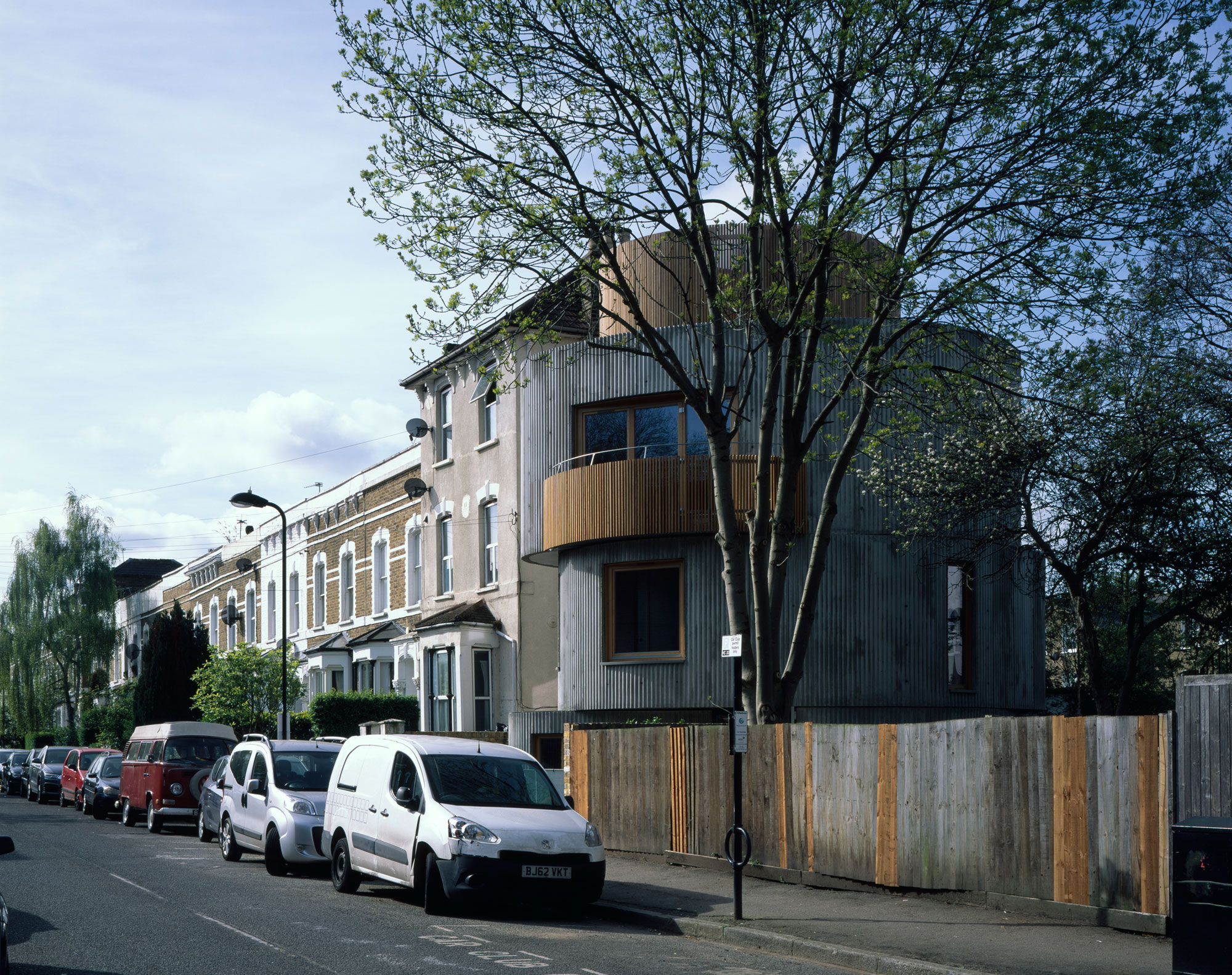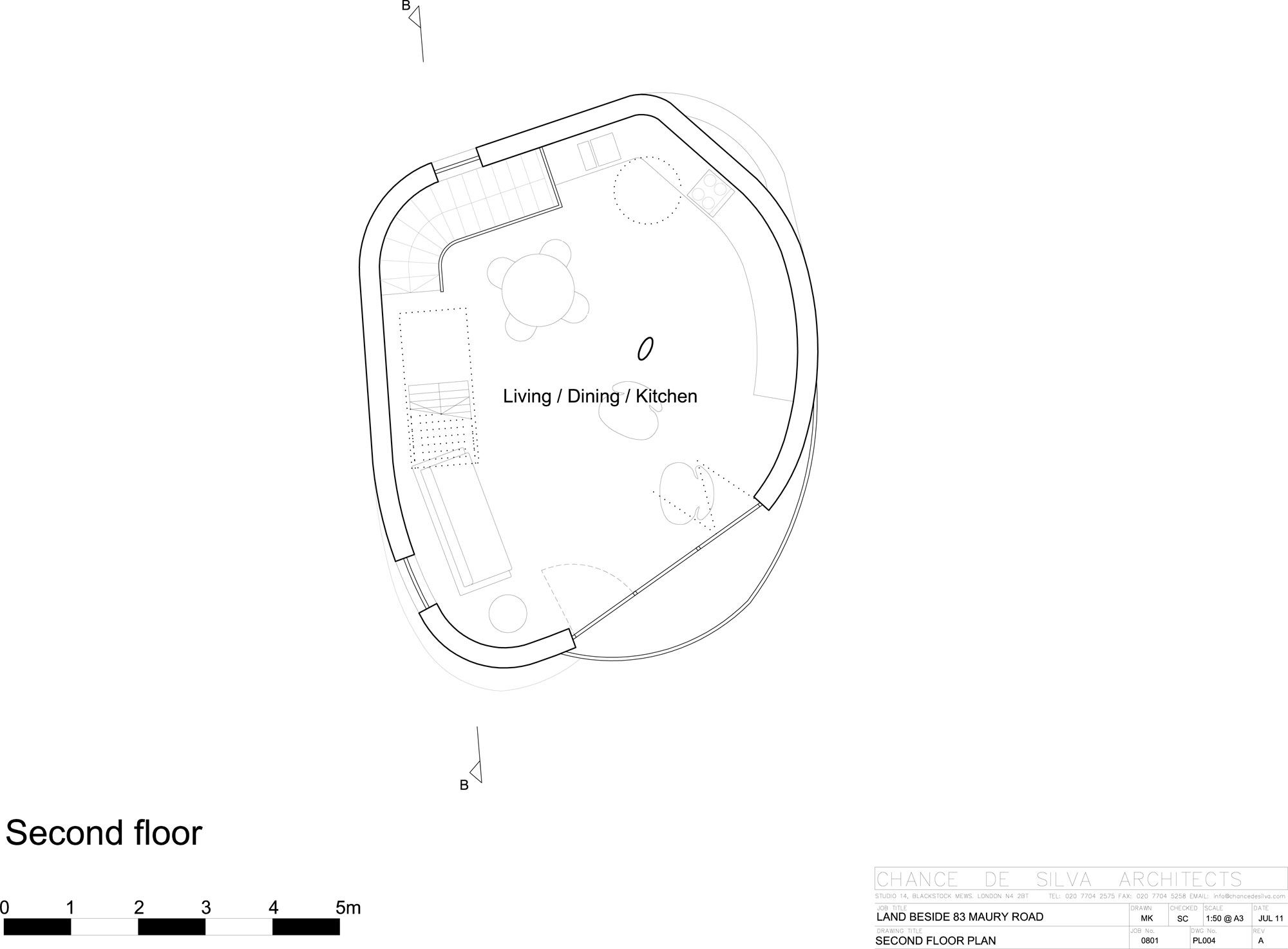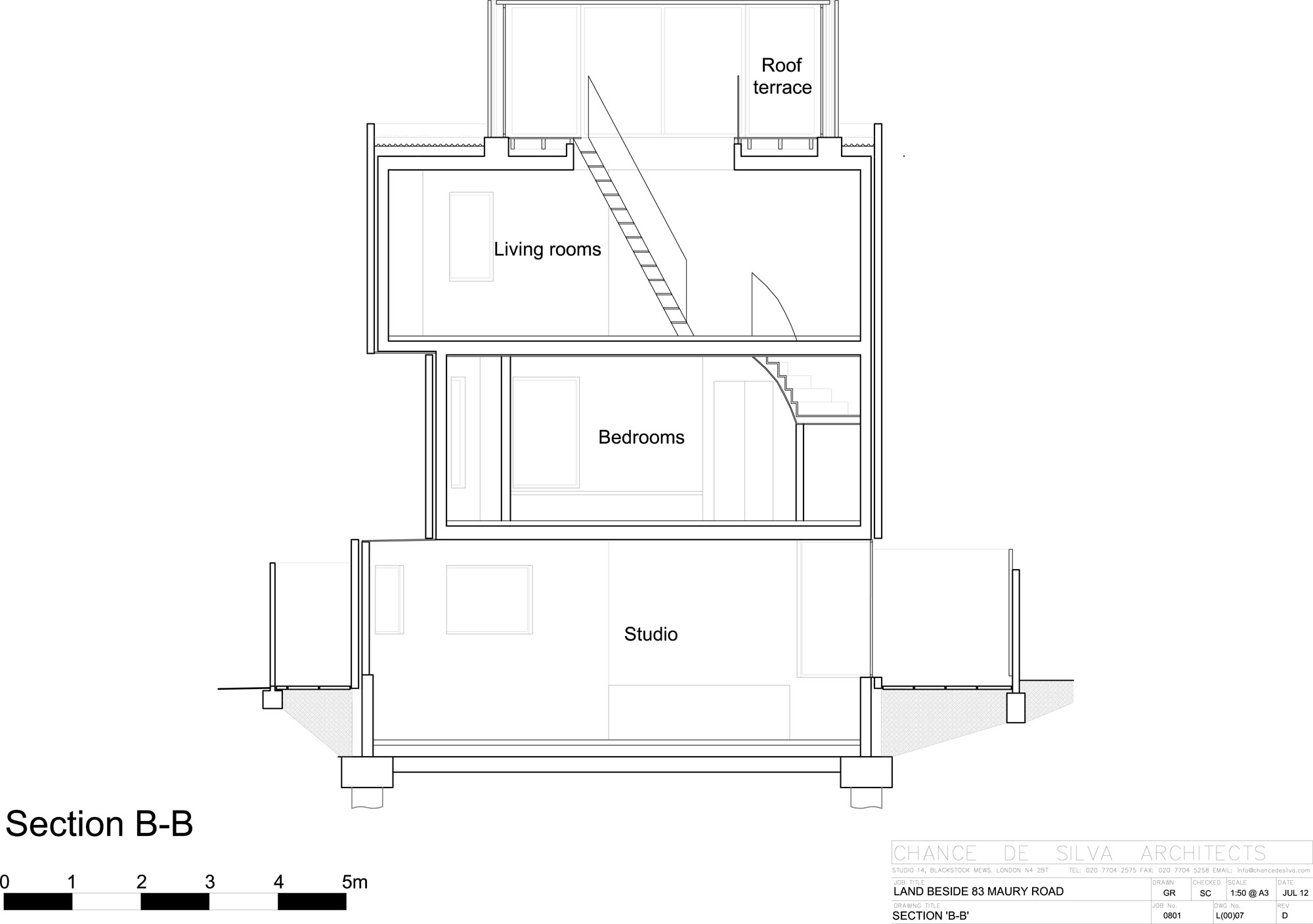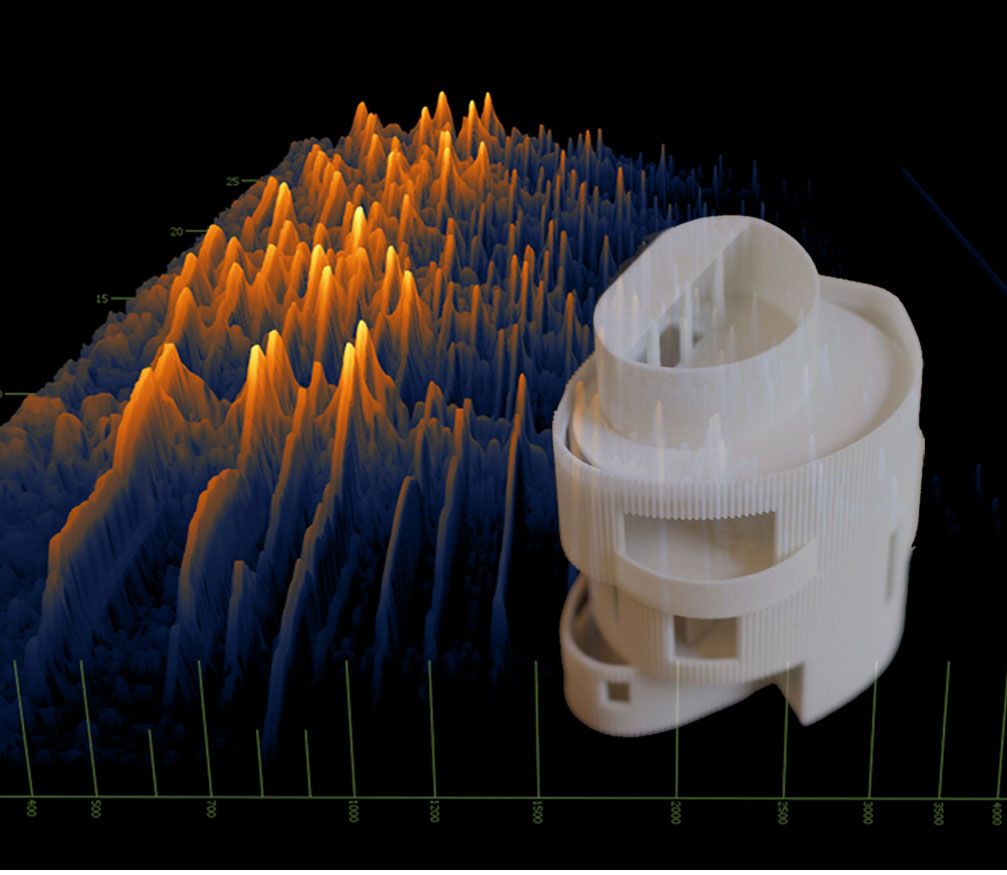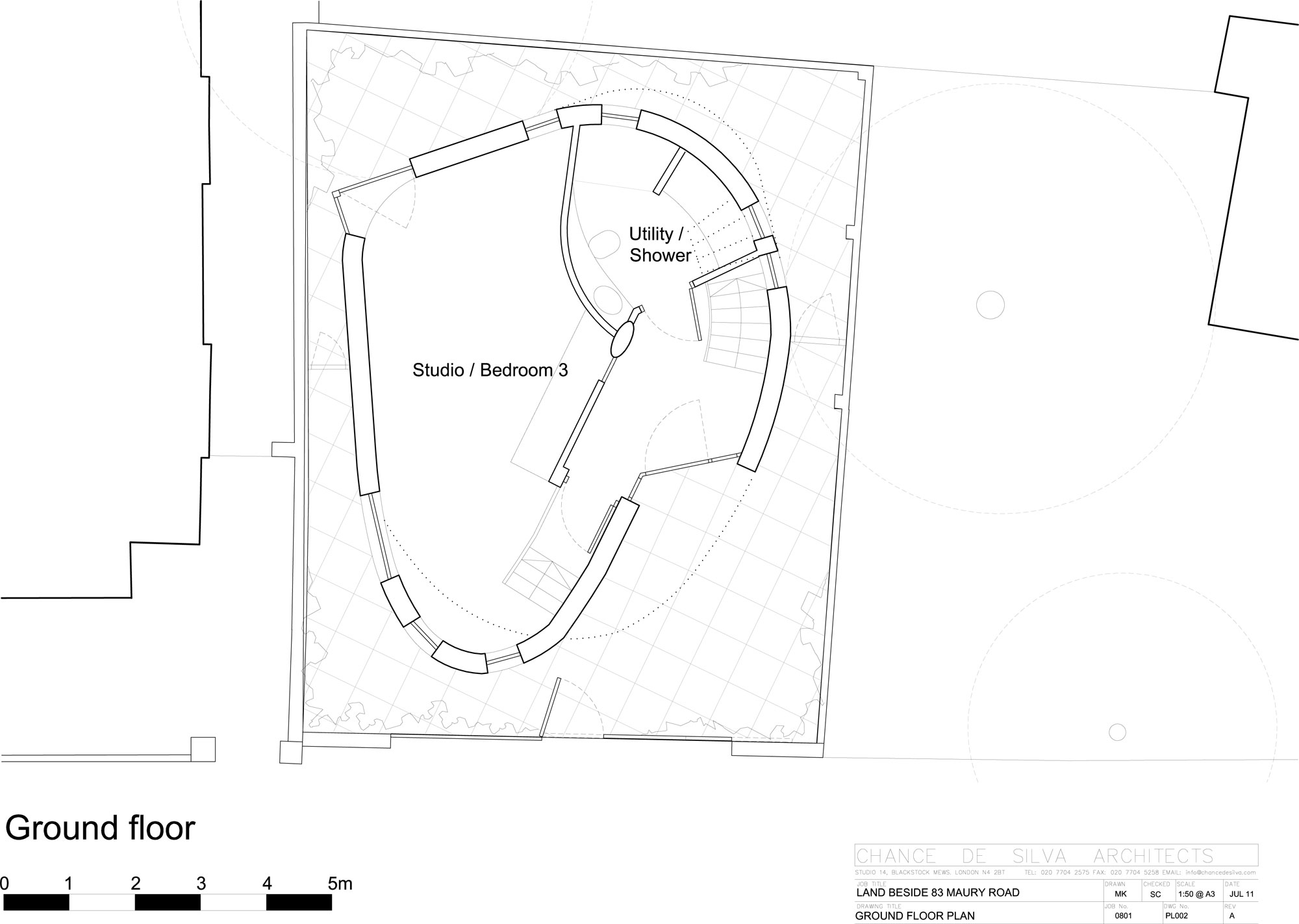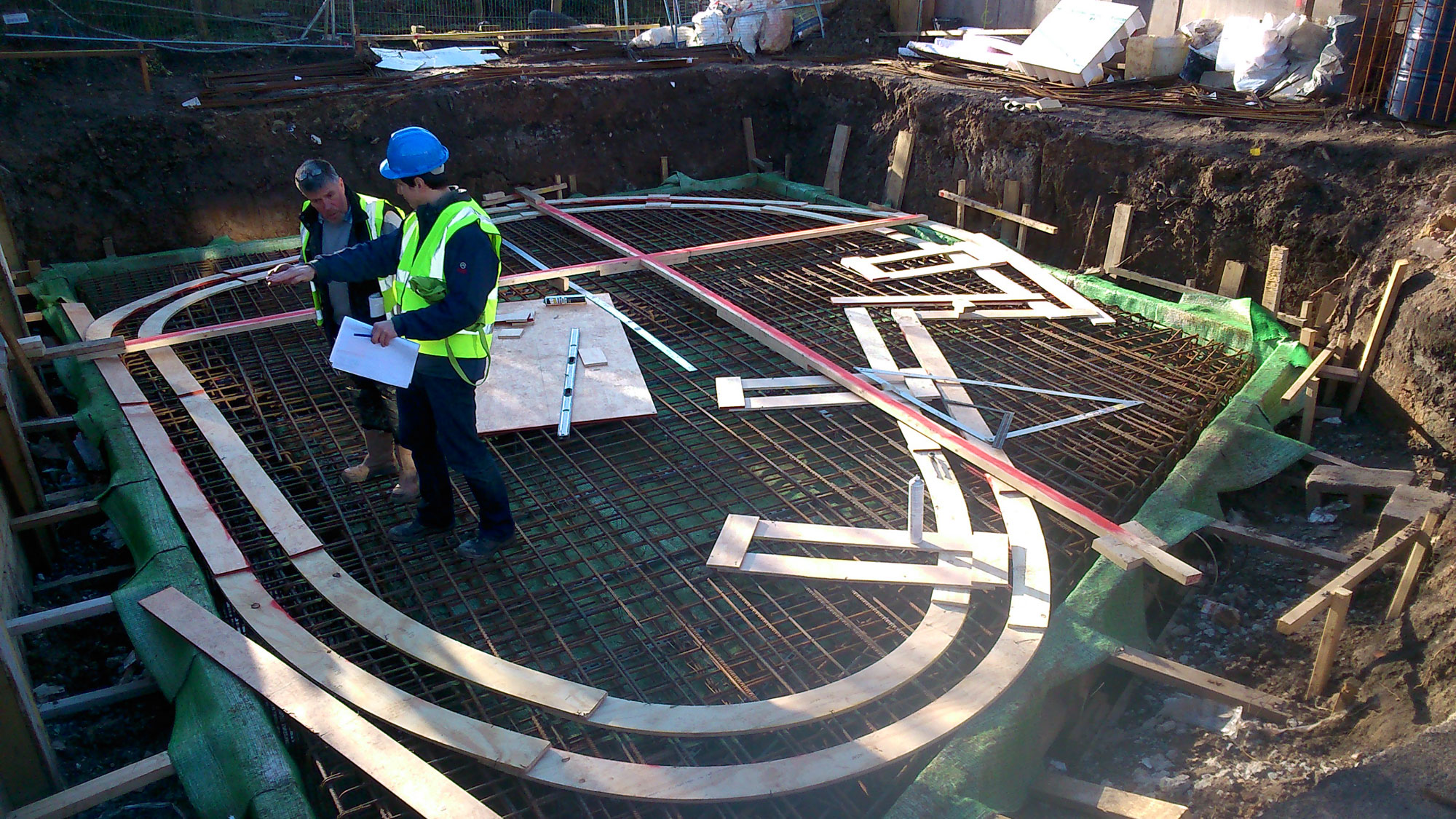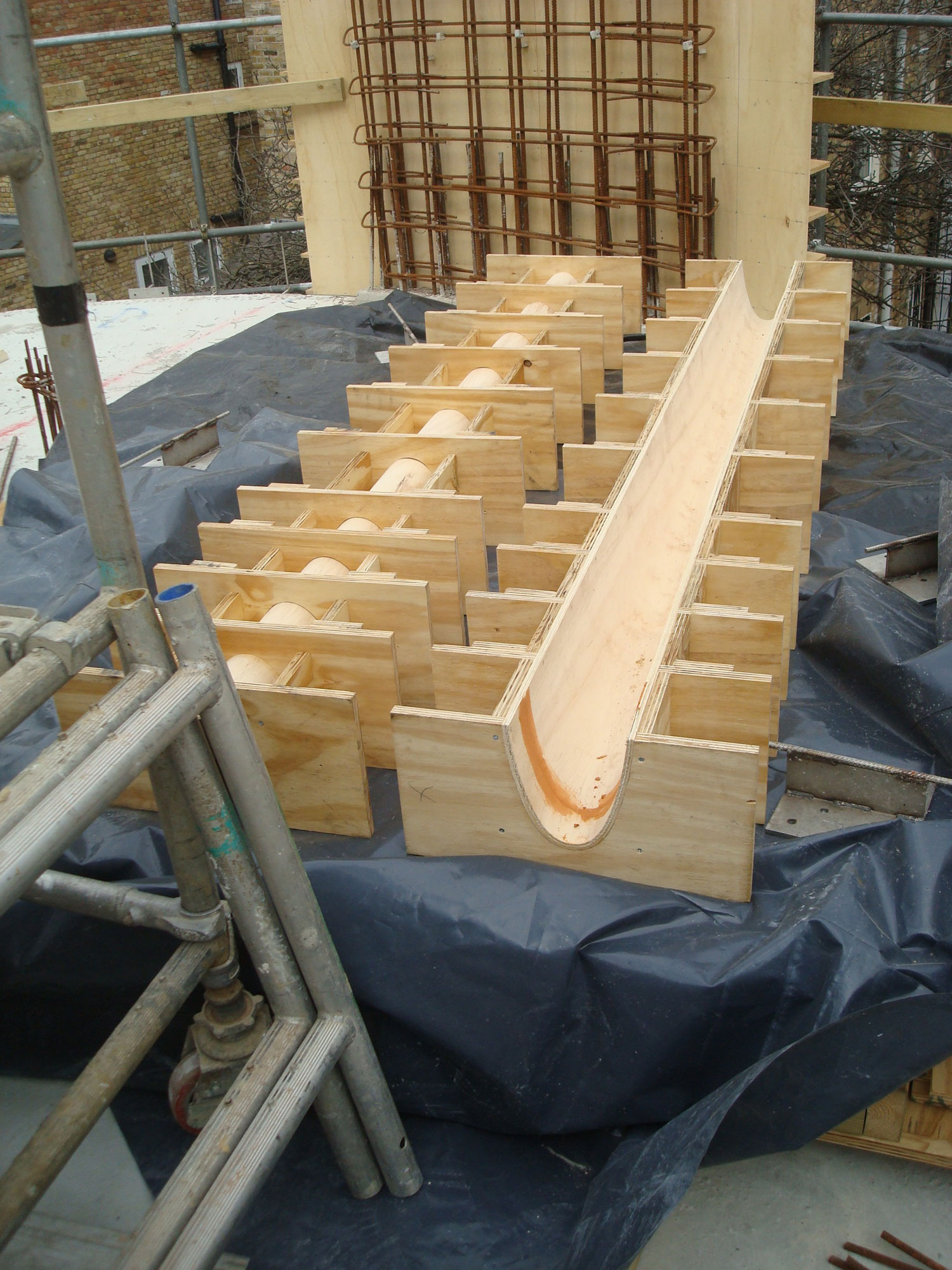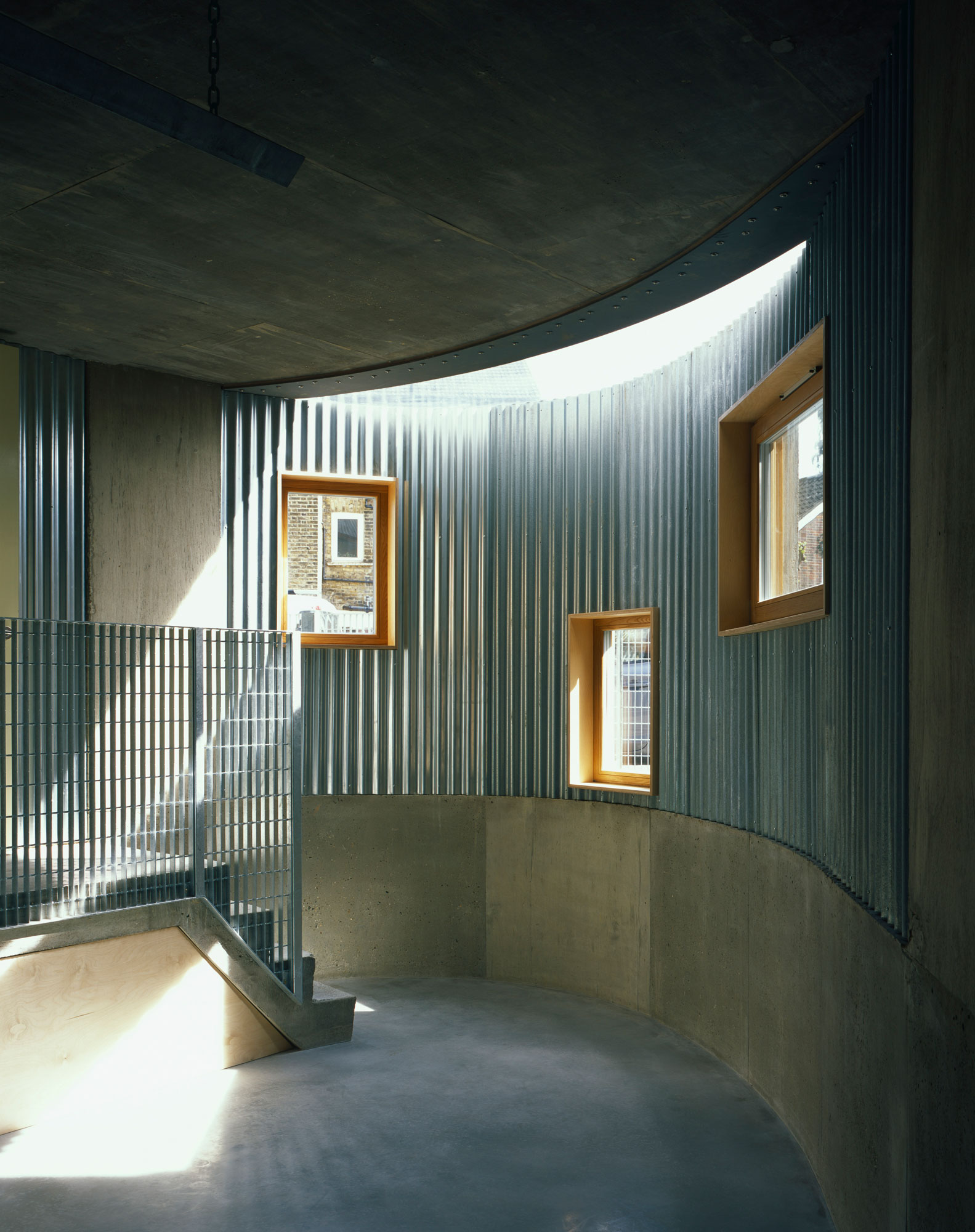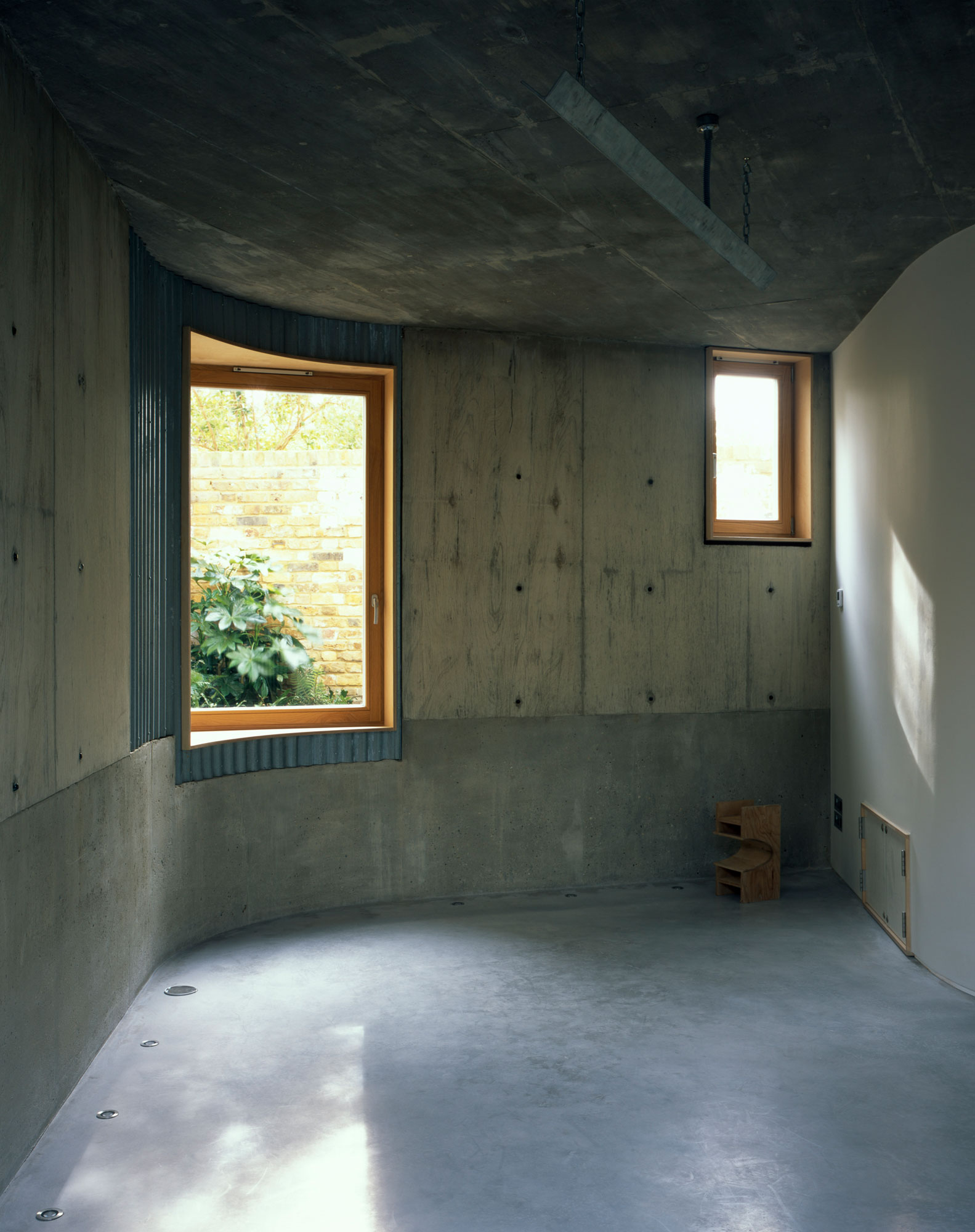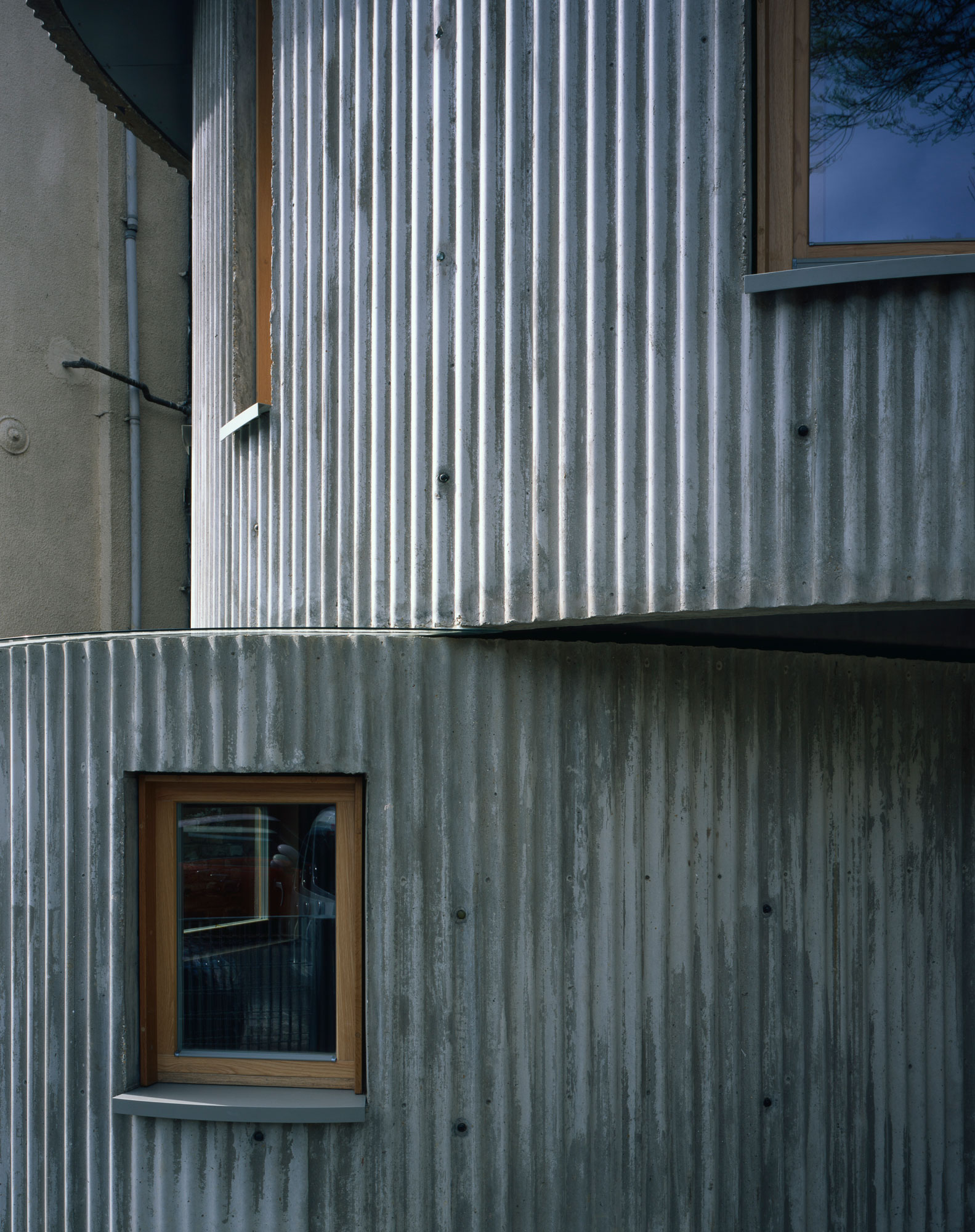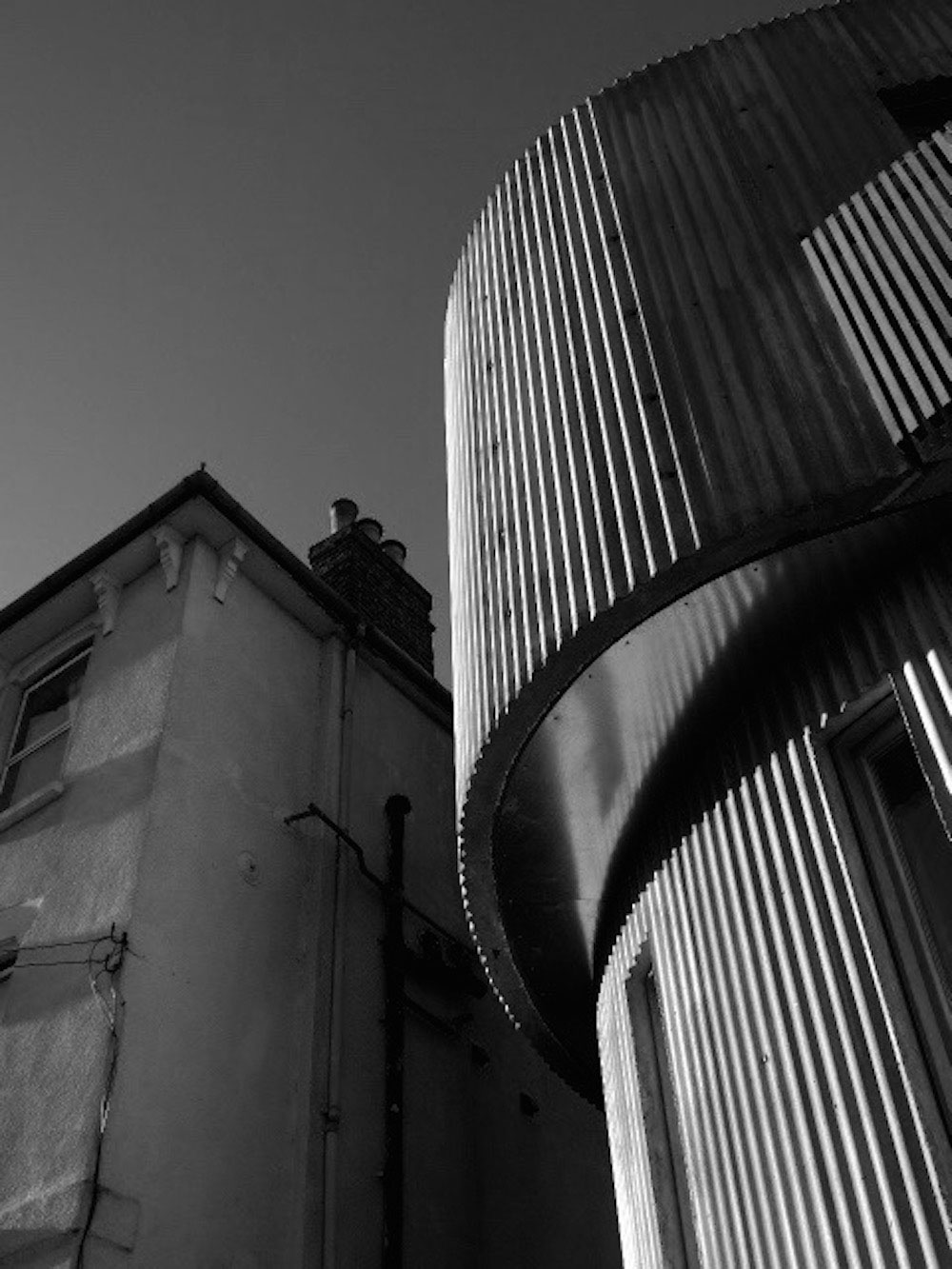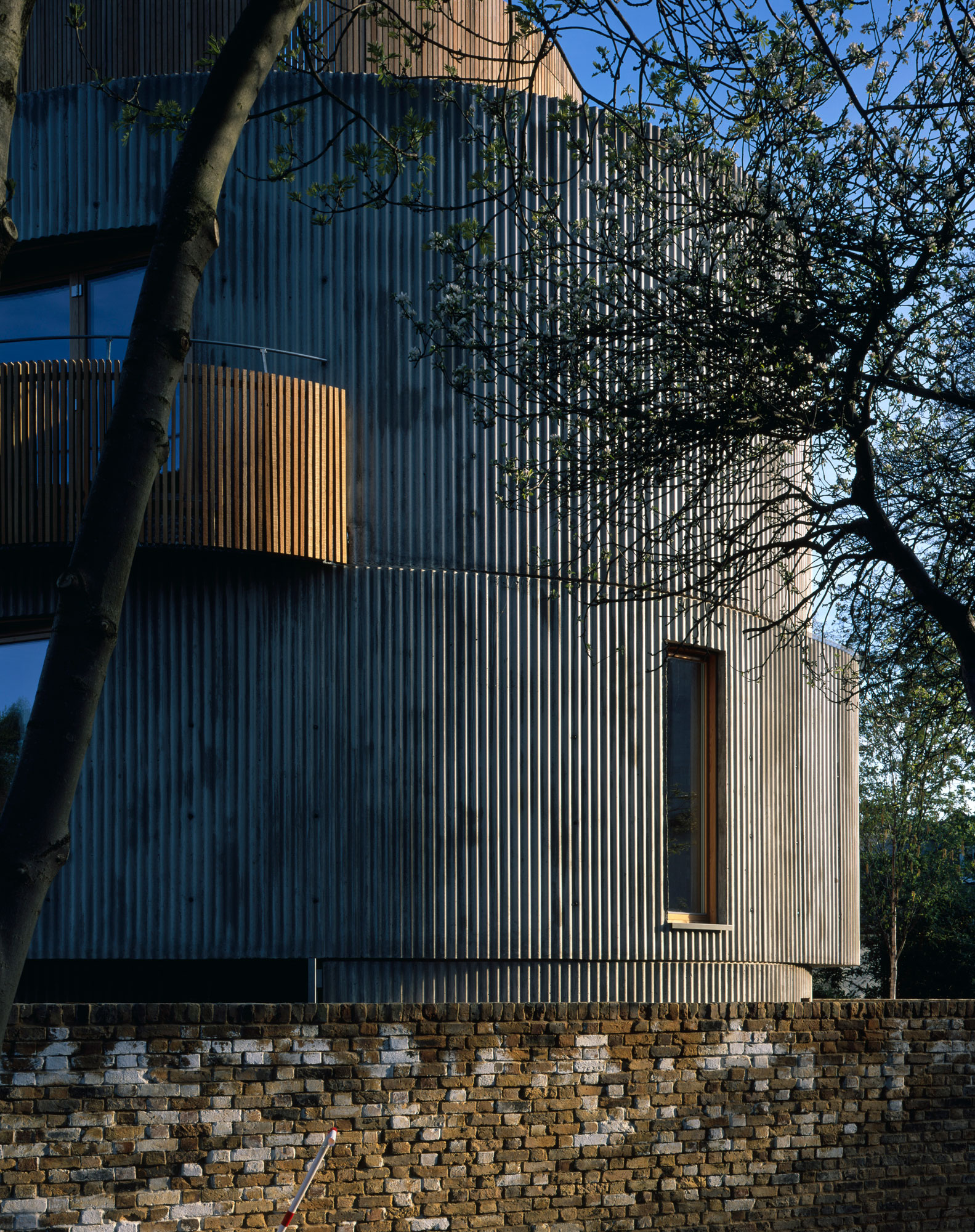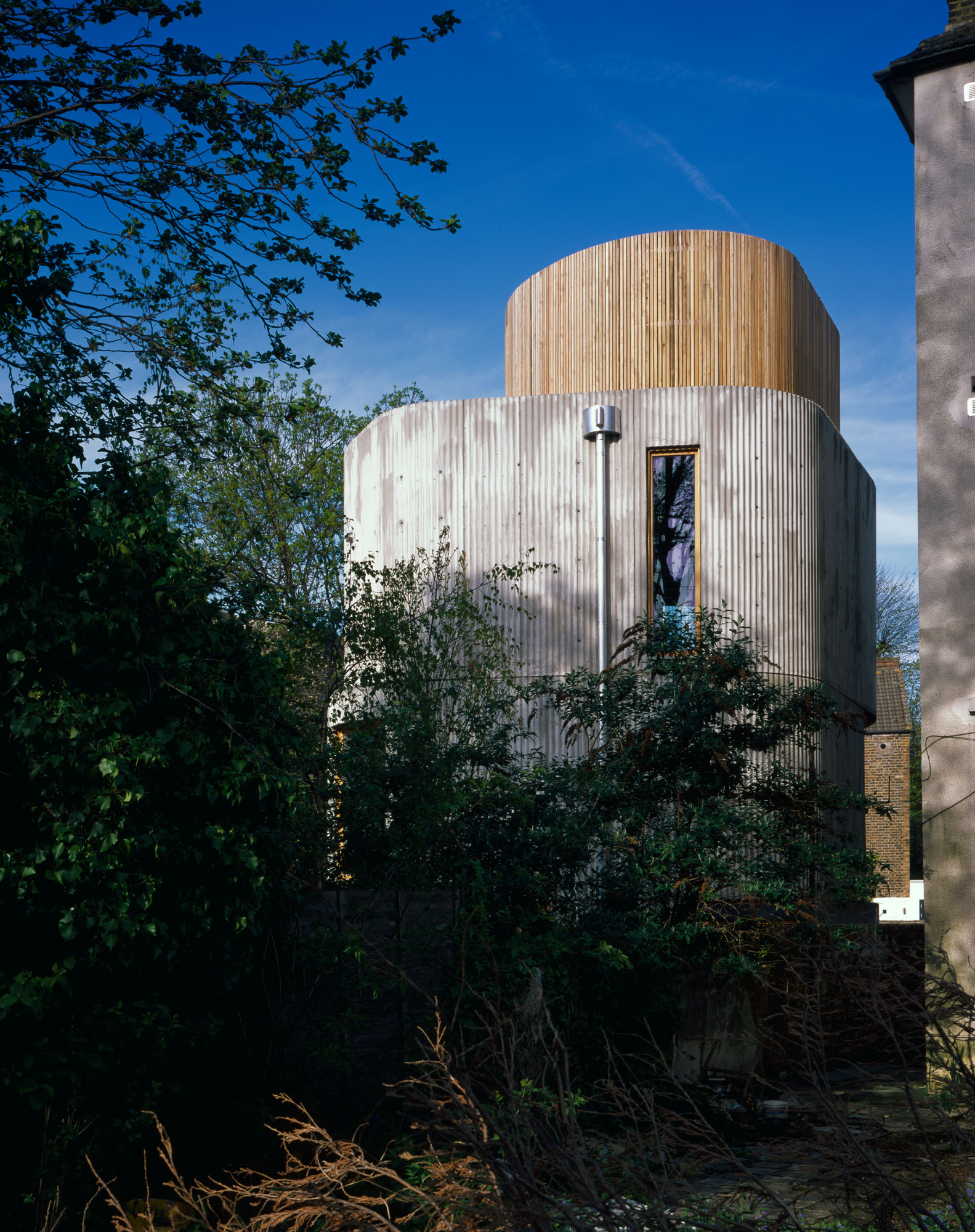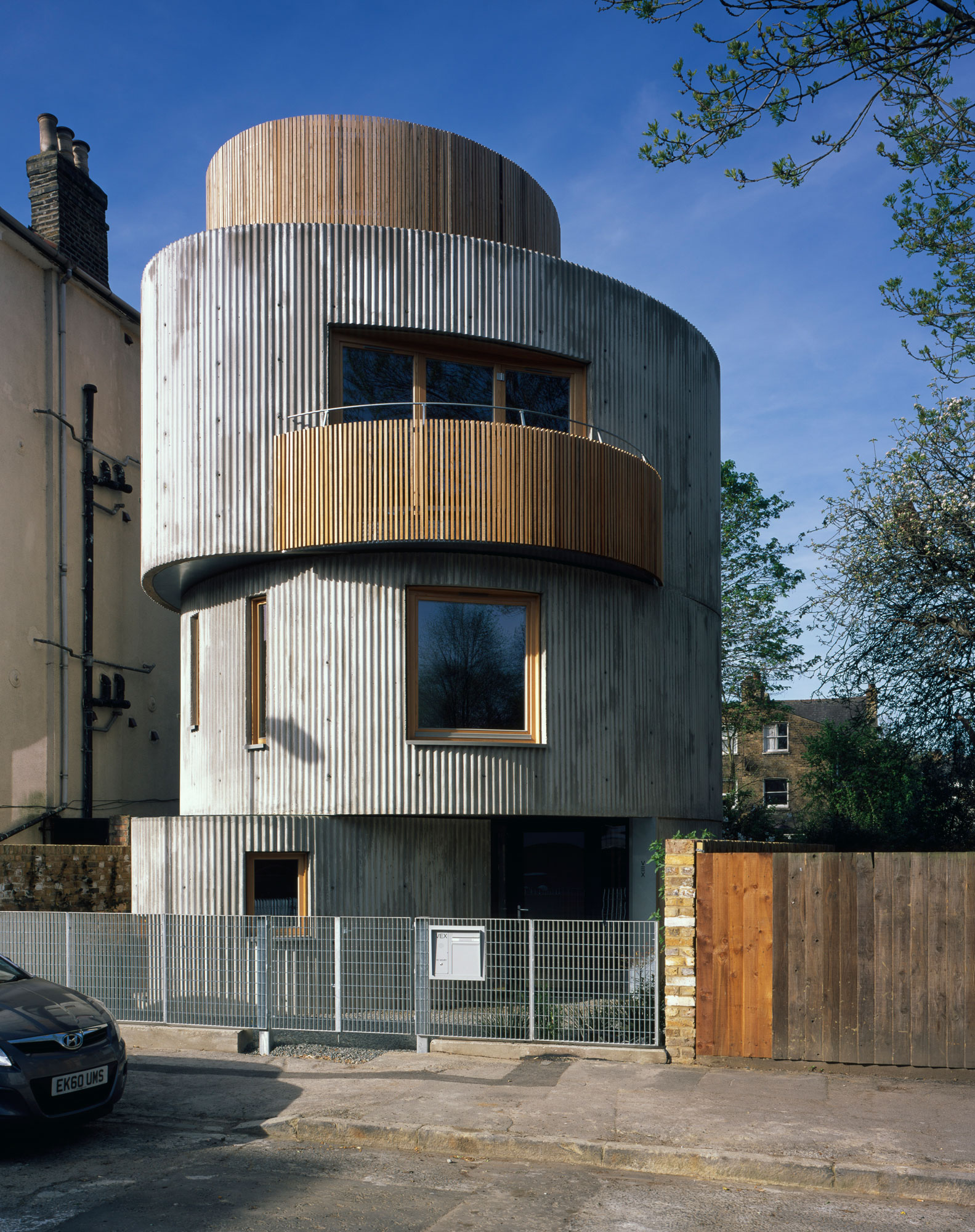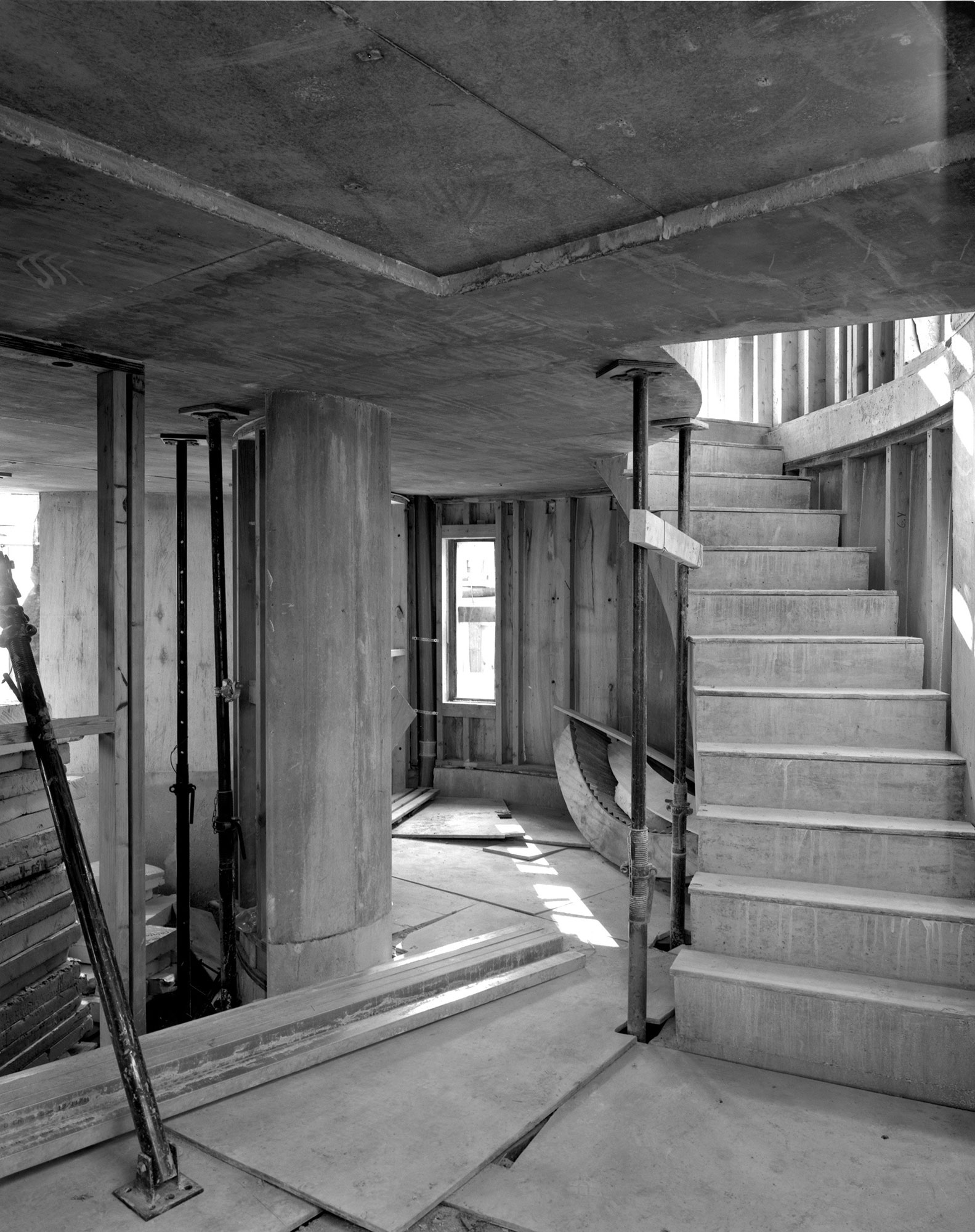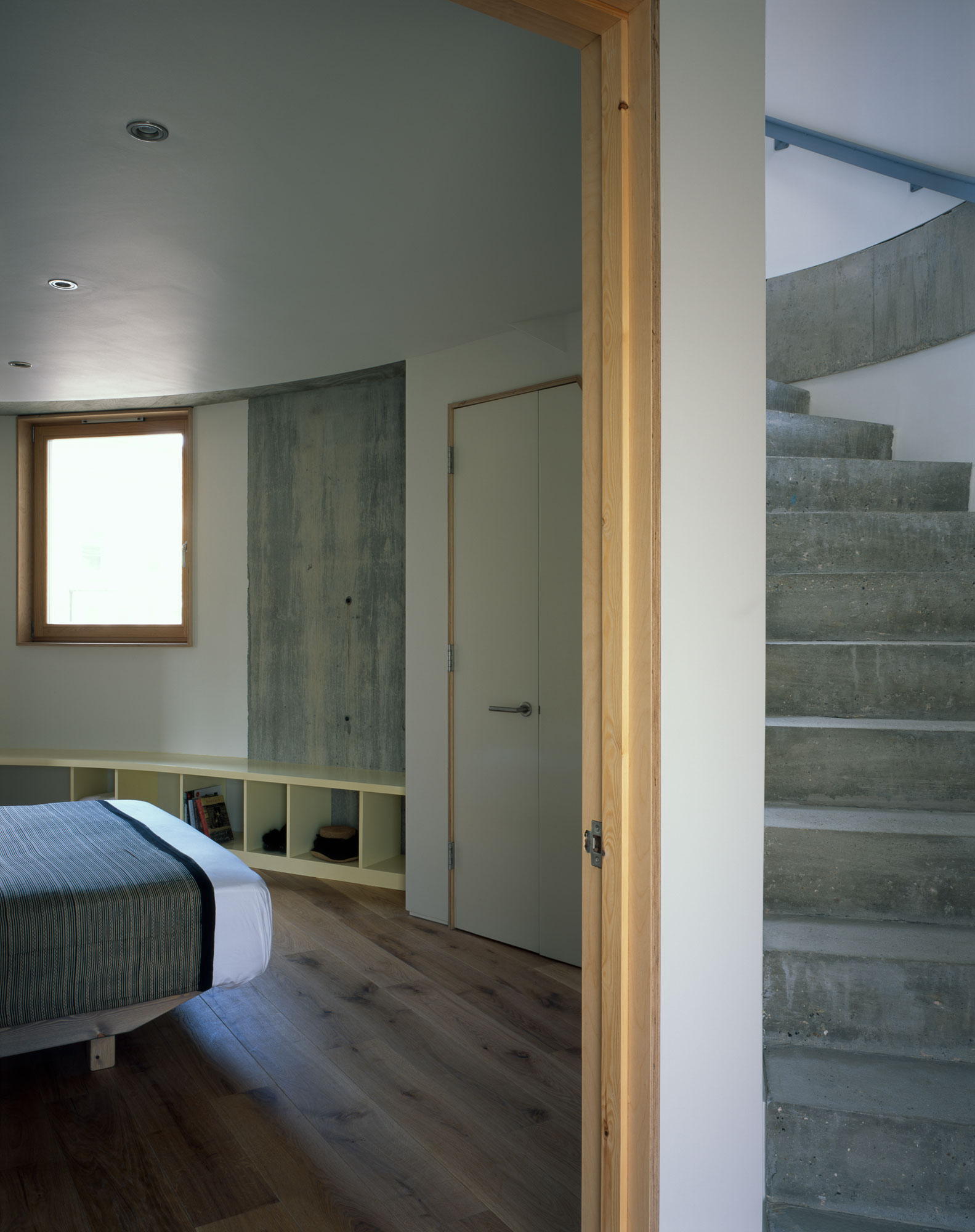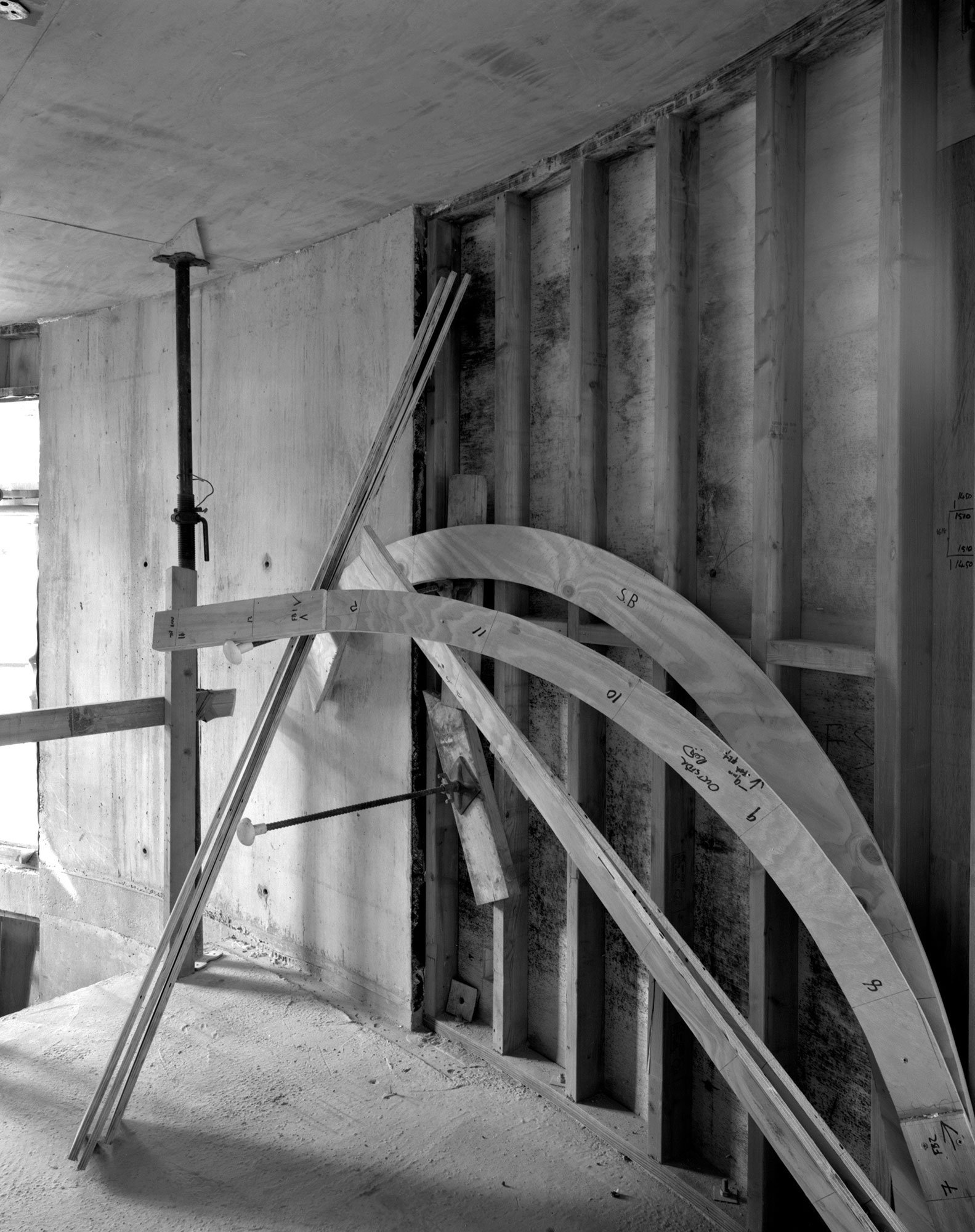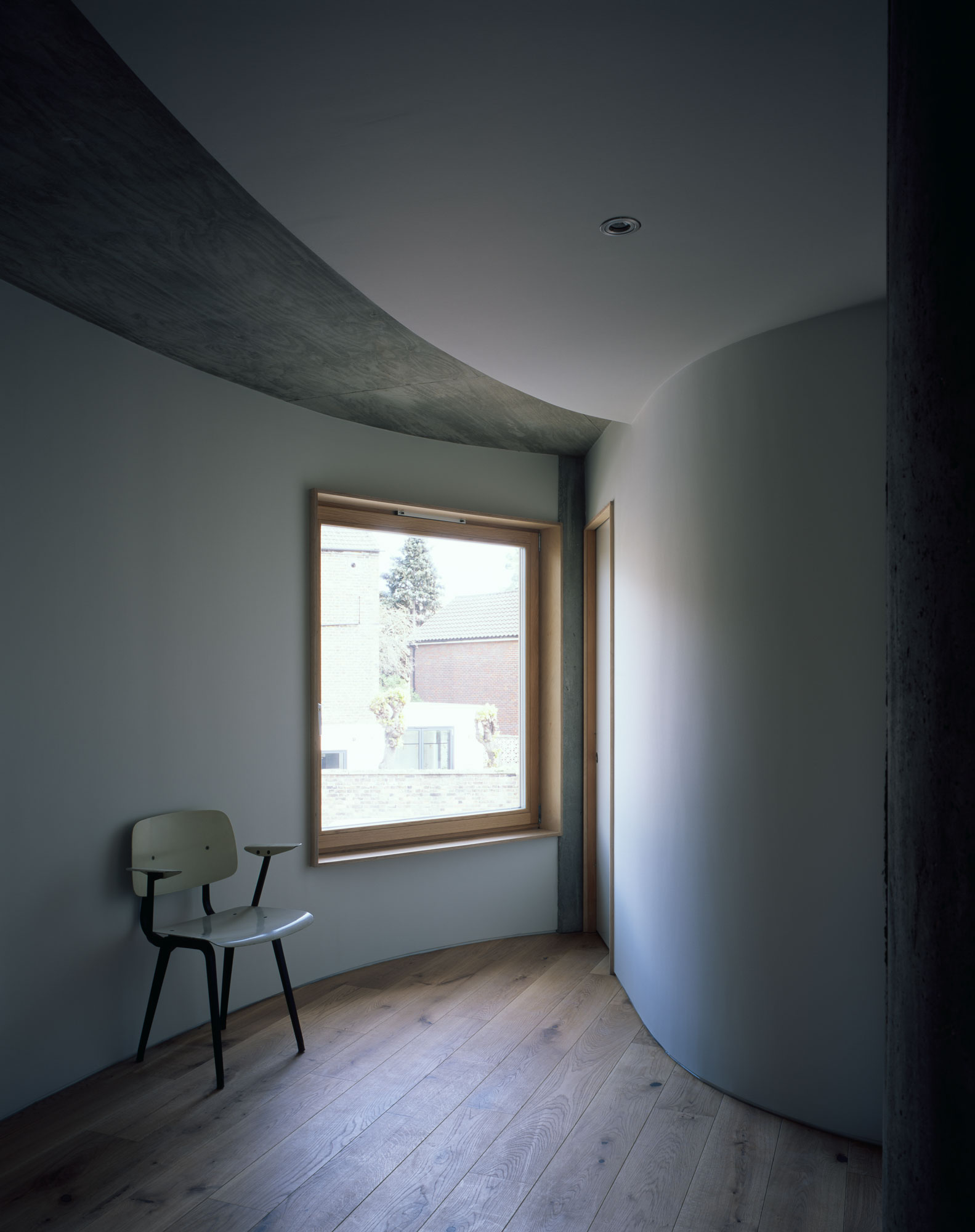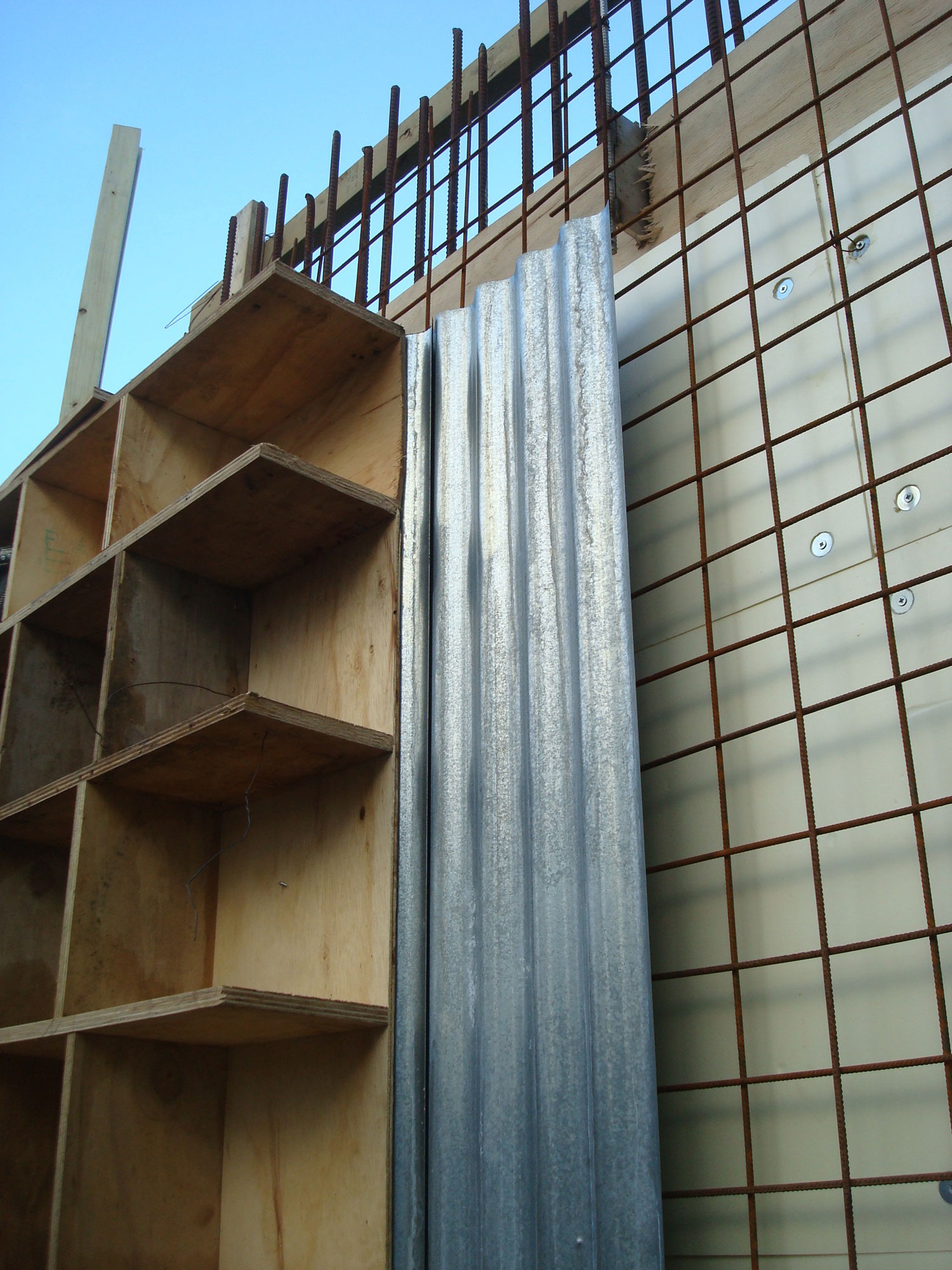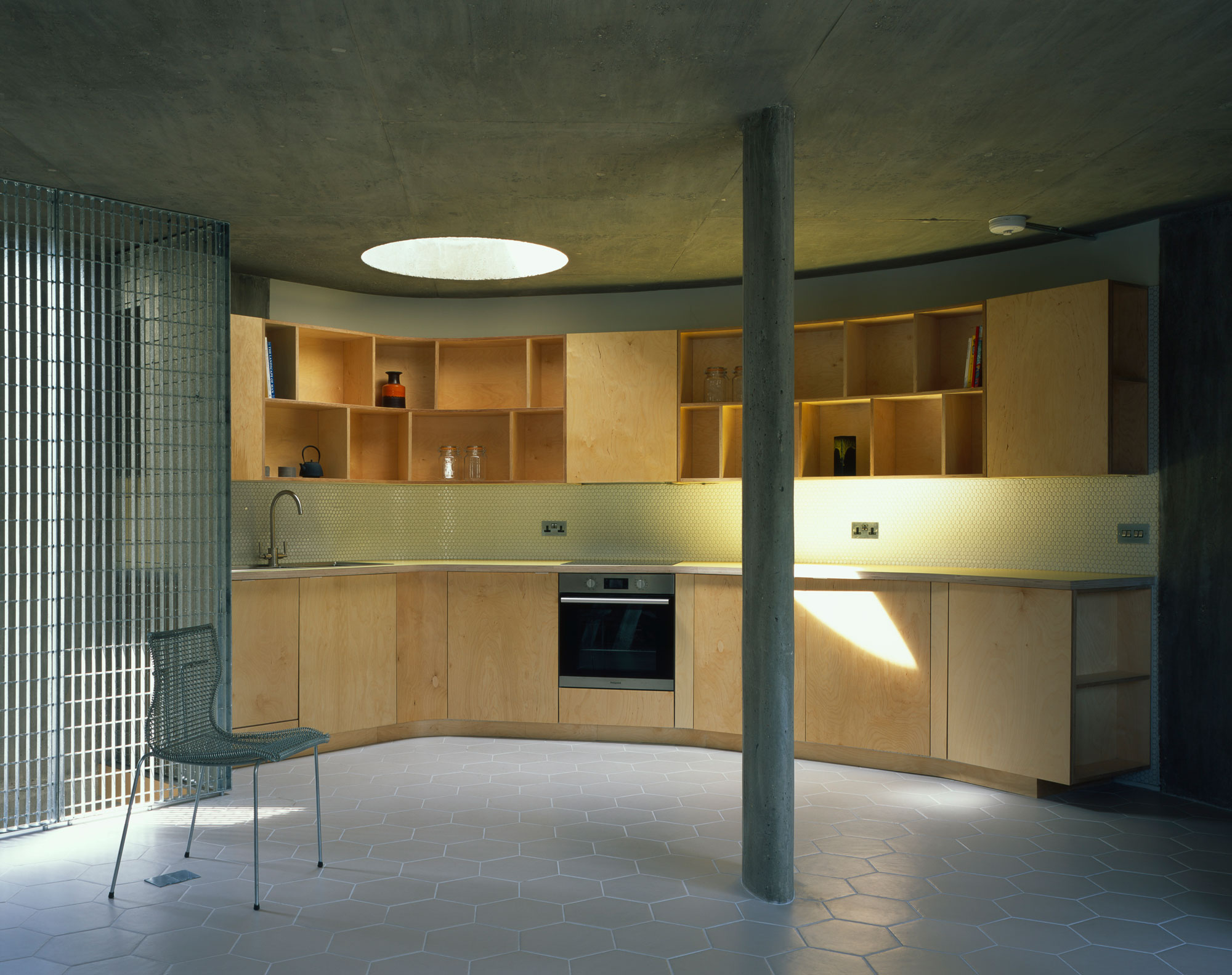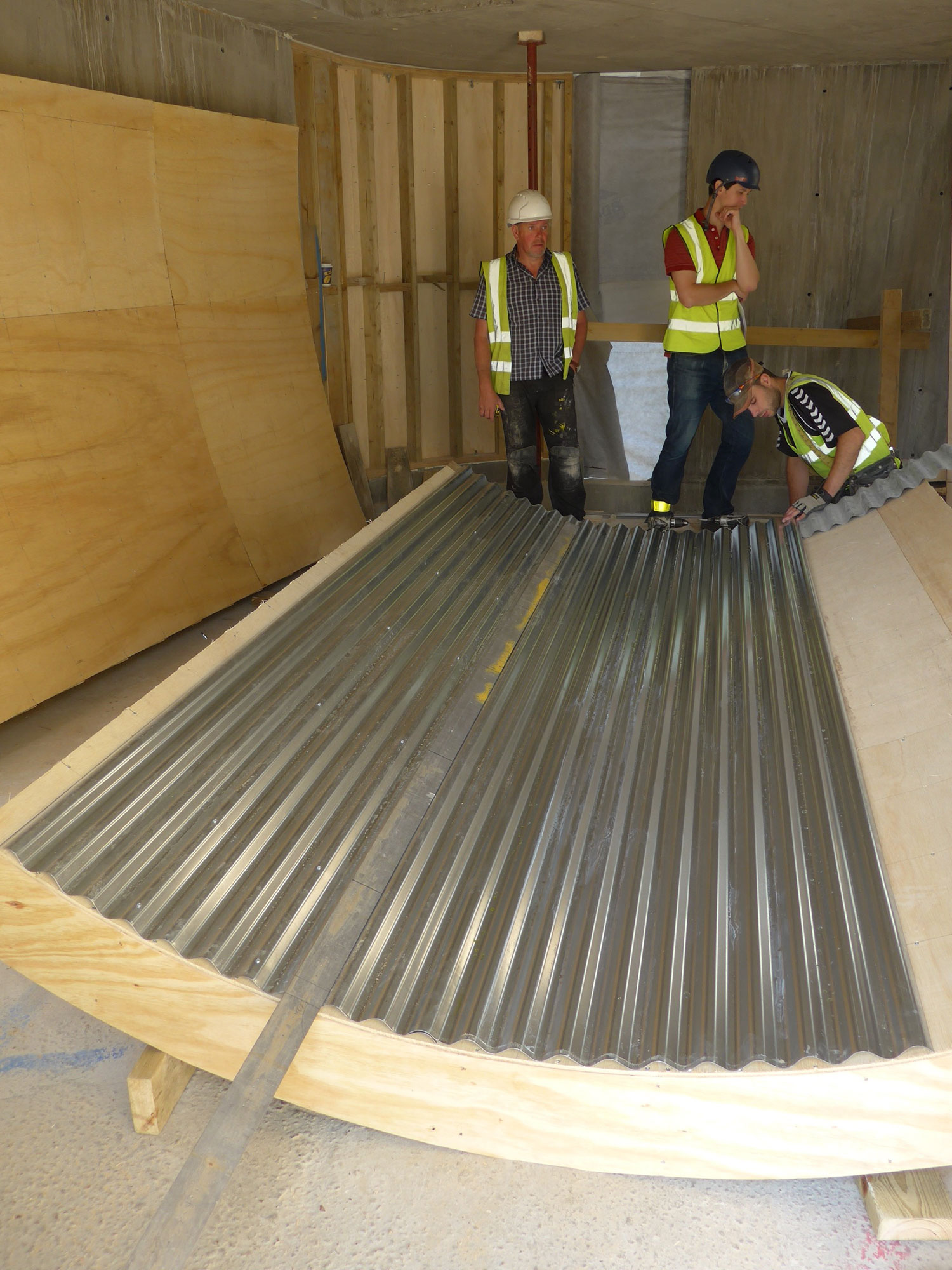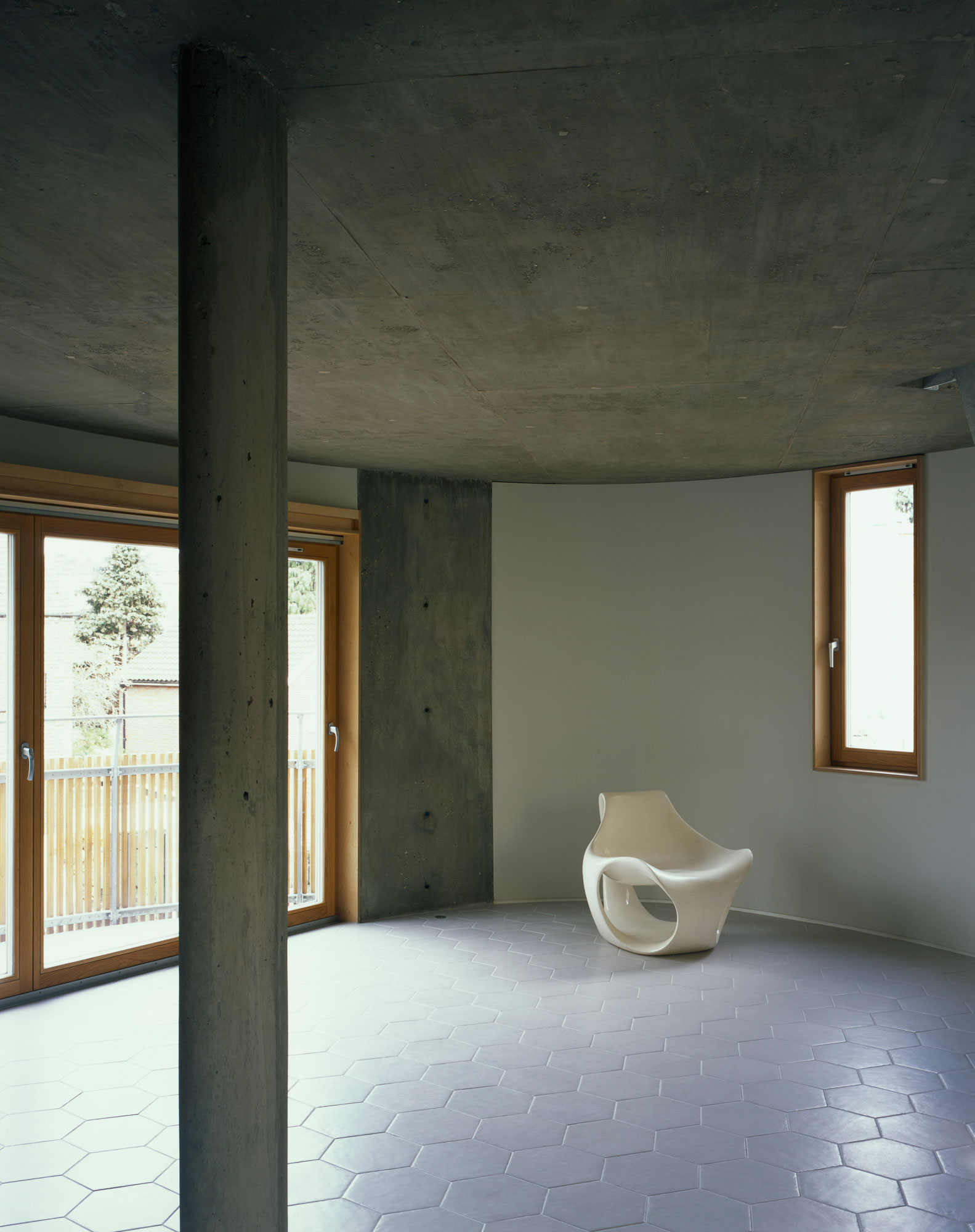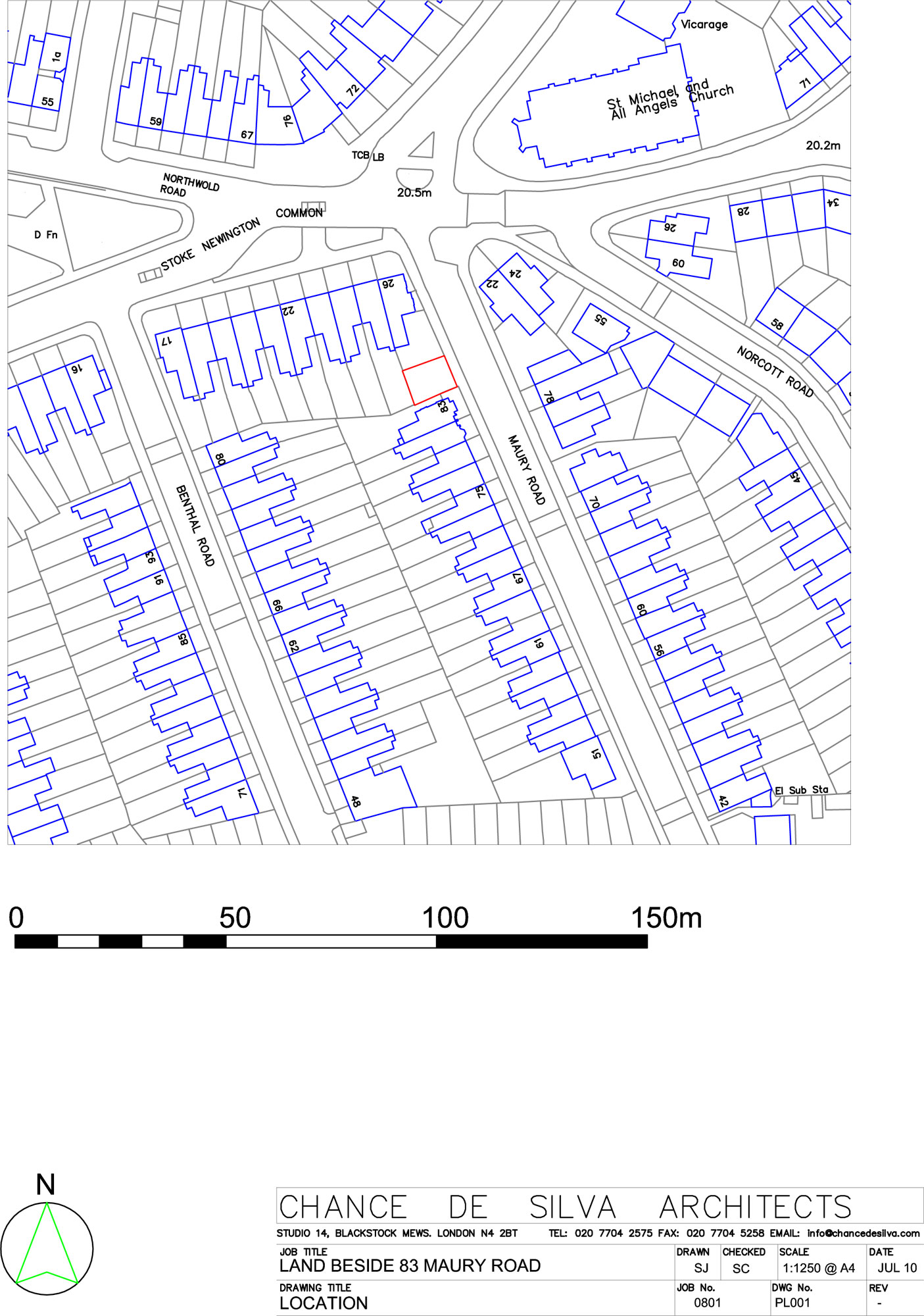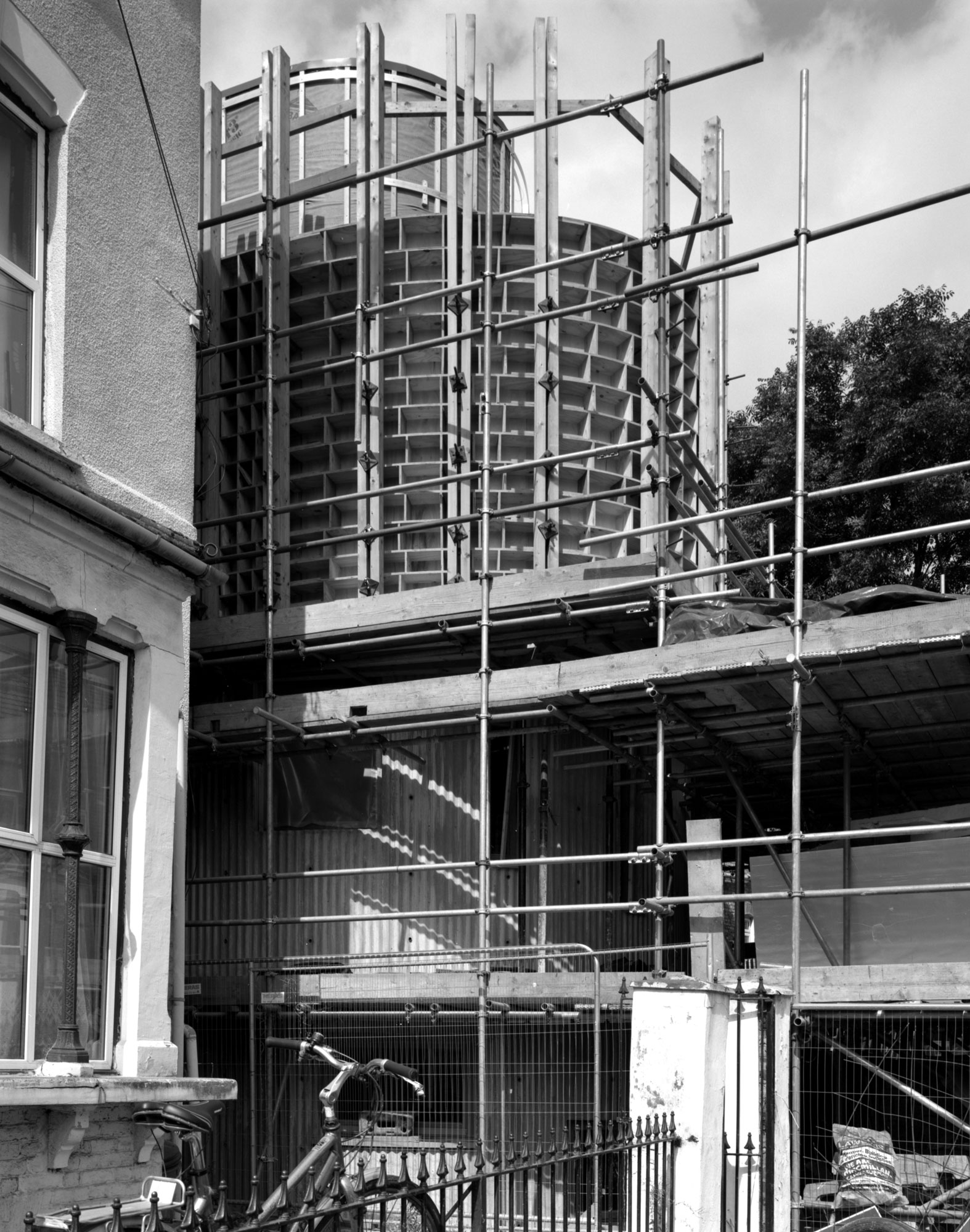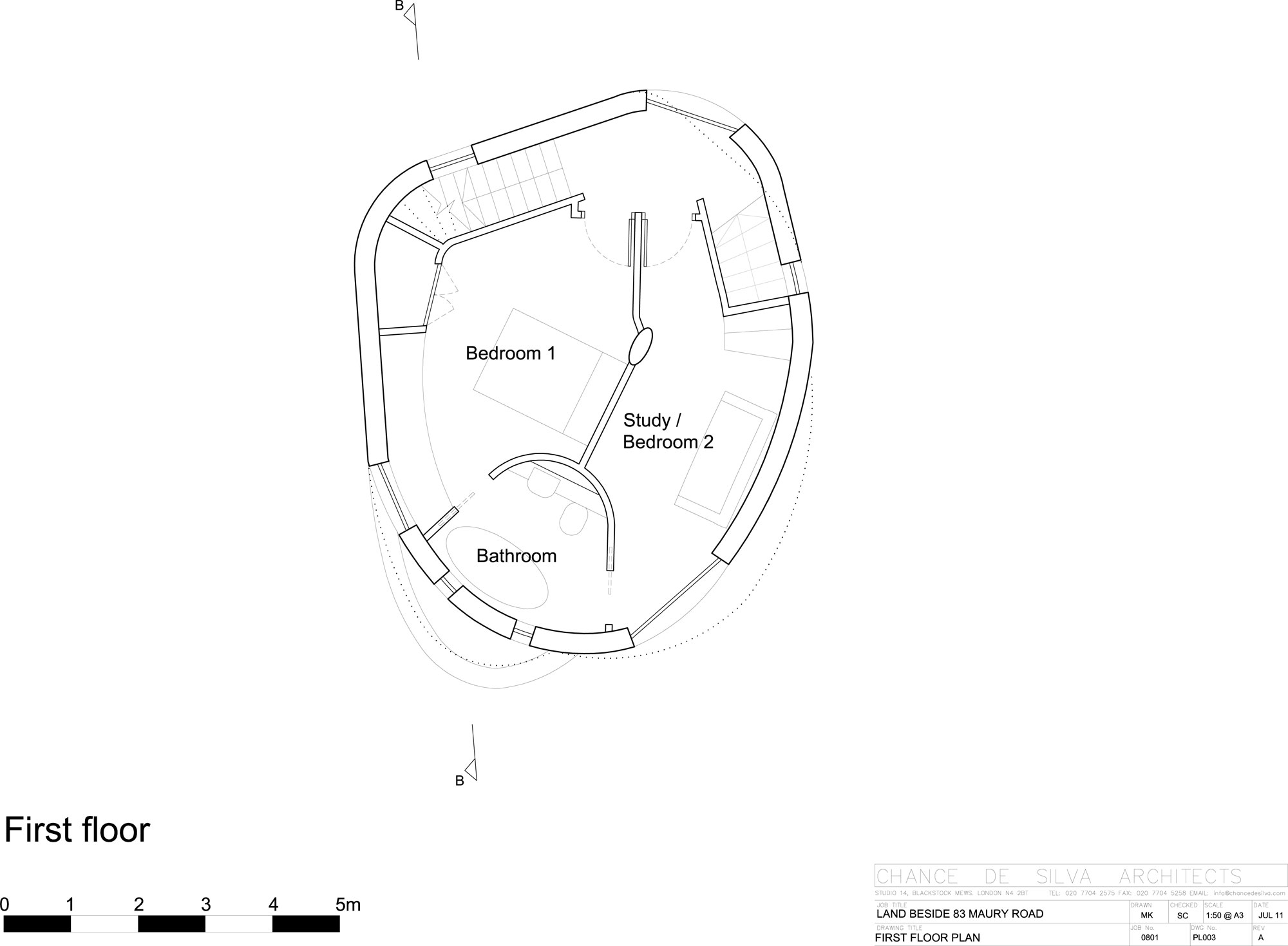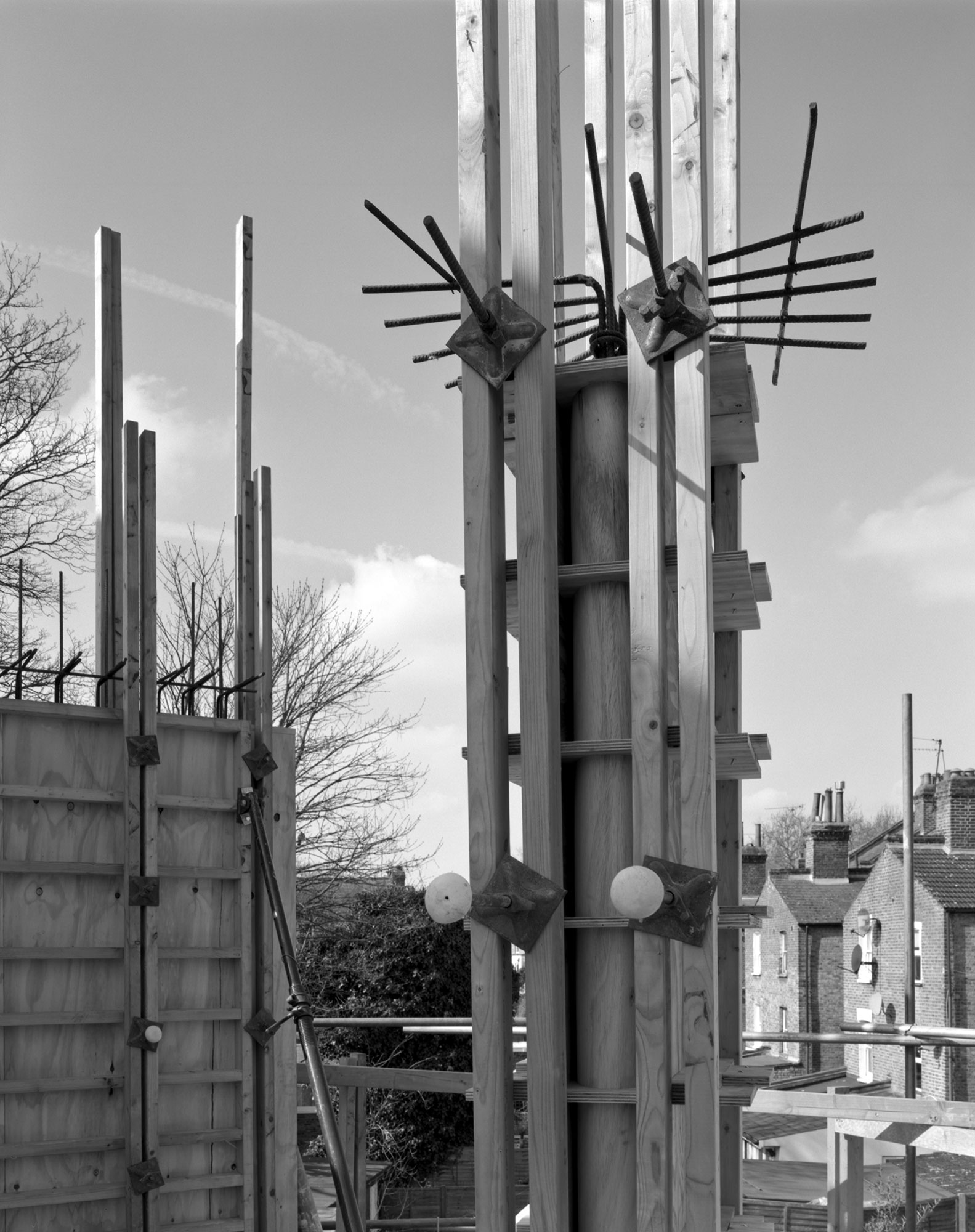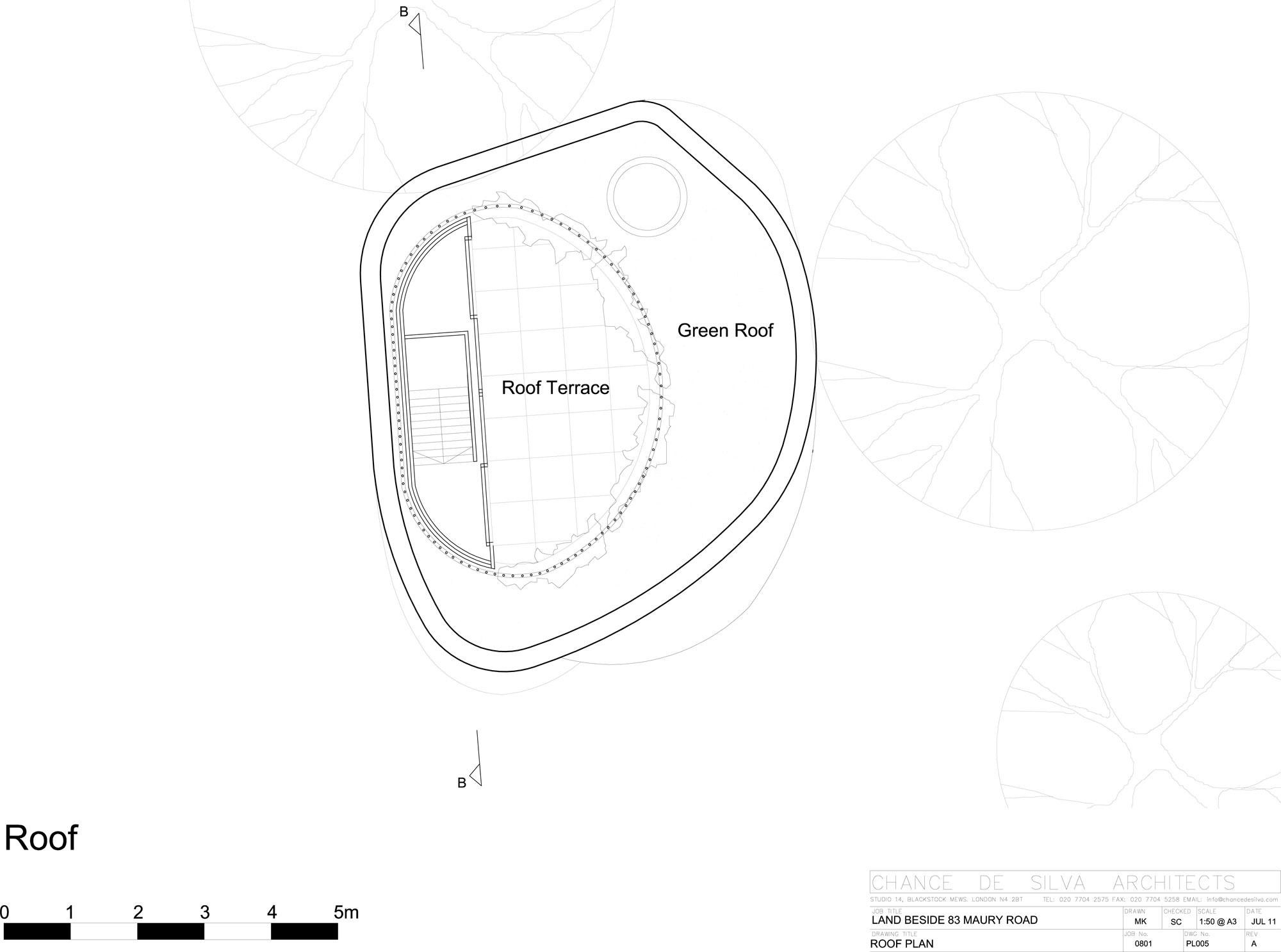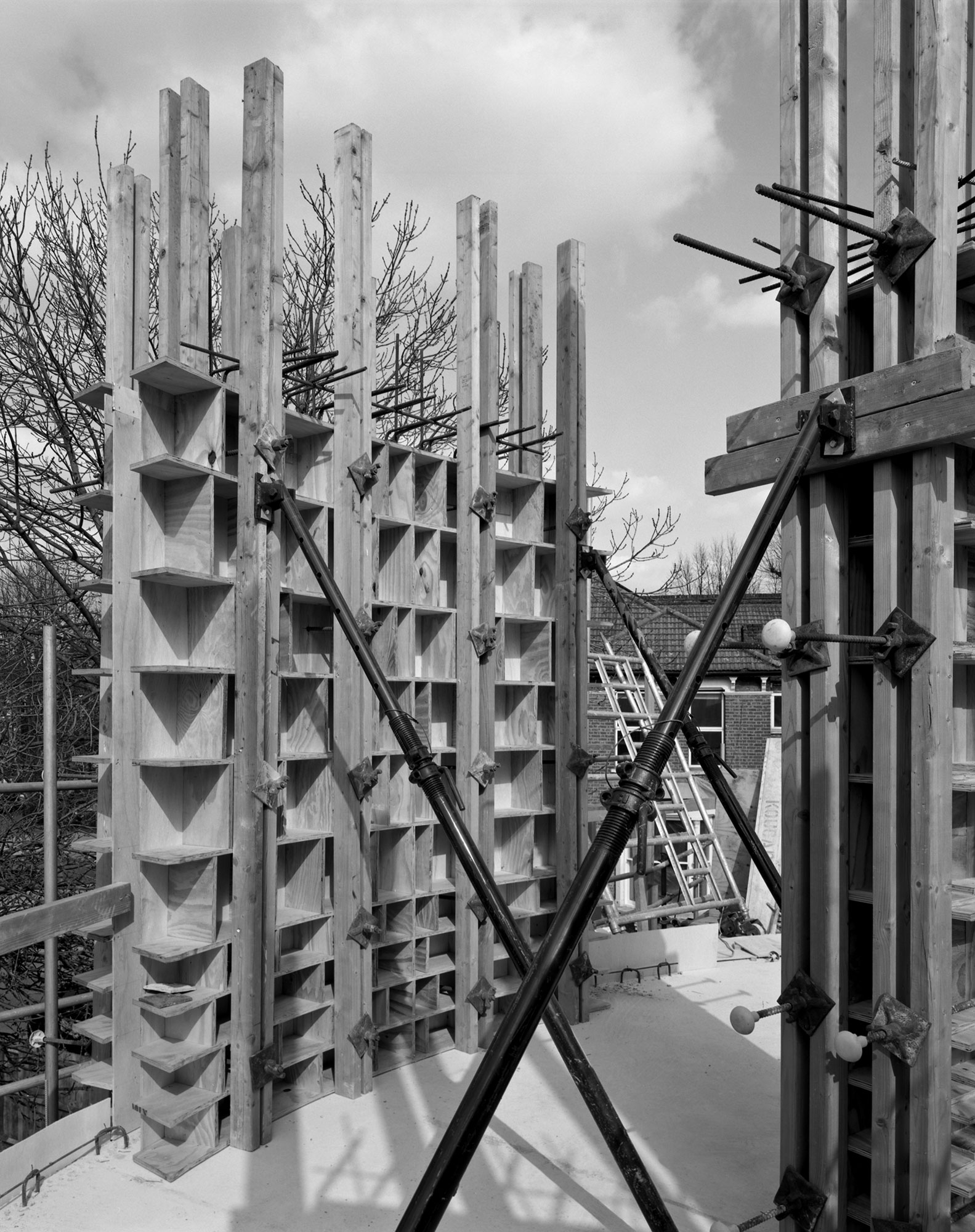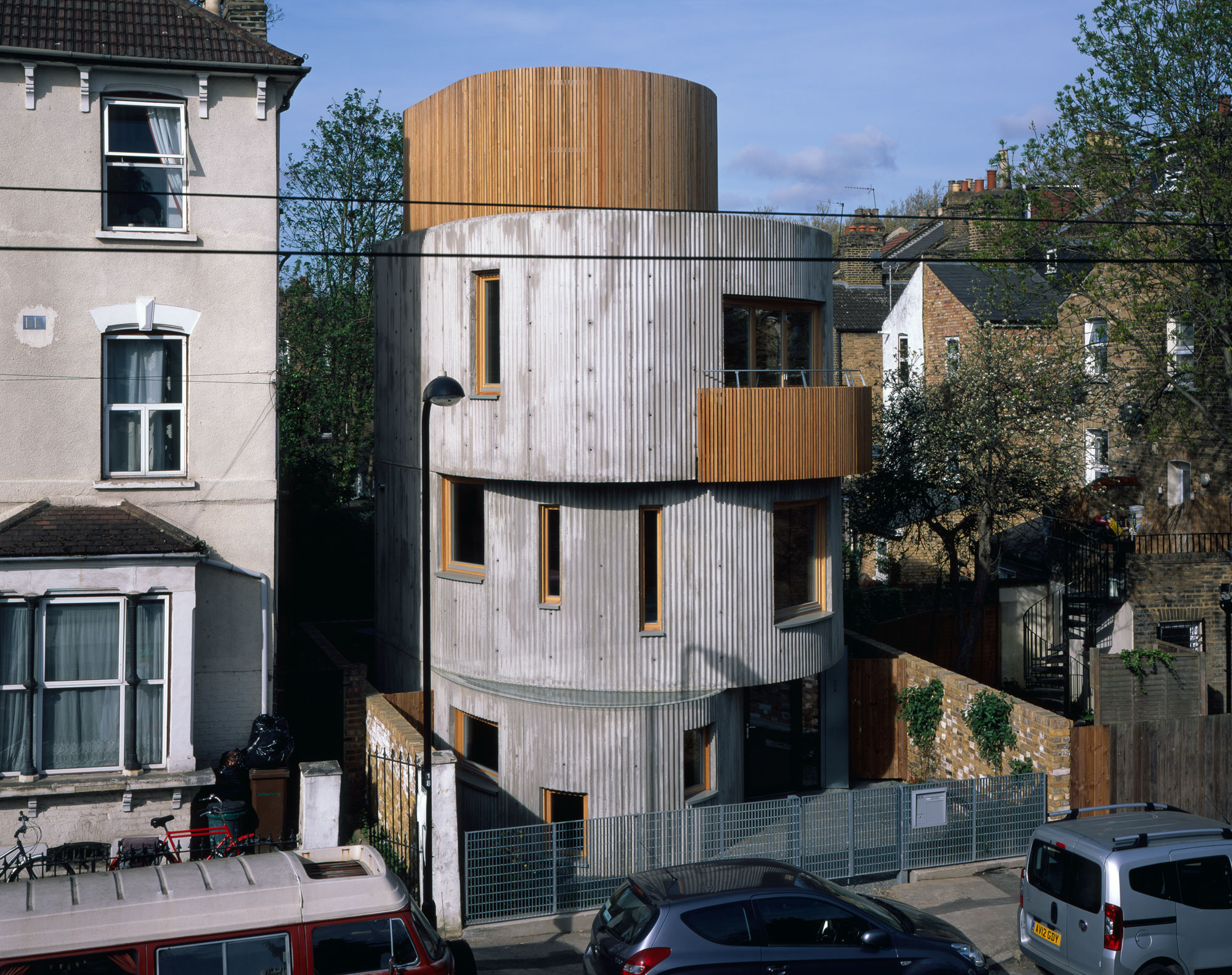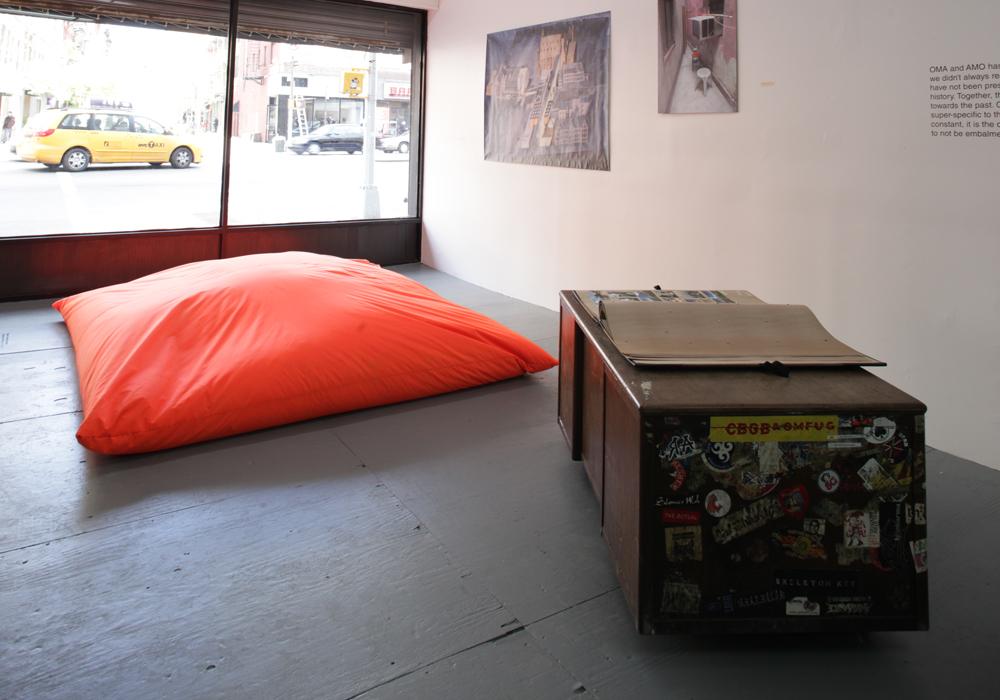Architecture inspired by a musical score: Vex residence by Chance de Silva

Cylindrical volumes in fluted exposed concrete and vertical wood slat cladding loom among the mainly Victorian houses in a street in Hackney, London. The storeys are stacked in a slightly staggered way, as if set down carelessly into place. This makes the entire façade seems to pulsate in a way that is both elegant and playful at once, as would not normally be expected of a concrete structure.
The movement, or rather the musicality of the building has come about through the conceptual idea behind the design. Together with Robin Rimbaud, who works as a composer and musician under the name of Scanner, the architects planned the residence on the basis of Erik Satie's "Vexations". In the process the score of the 18-hour, repetitive piano piece came to find expression in the model, serving as the basis for placement of openings that respond to sightlines into the neighbourhood and the fall of daylight into the building. The result takes both elements – music and architecture – into equal consideration.
Creating the desired irregular shapes required great craftsmanship for the formwork and the site-cast concrete. Efficient operation of the building is ensured not only by the good thermal mass of the concrete but also by triple-glazed windows, highly-insulated walls and underfloor heating. An integrated Sonos sound system introduces music into the house as if in continuation of the design process. The architects skilfully used the unusual volumes to provide rooms with daylight, placing a crescent-shaped skylight in the top of storeys with a receding one above them, and cladding the soffits of projecting storeys in galvanised sheet steel to reflect light.
The arrangement of the rooms is surprising, requiring you to climb past two storeys containing the bedrooms to get to the living and eating area. Once on the final storey, or on the roof terrace above it, you are rewarded with views into the historic neighbourhood. Parts of the interior walls and the ceilings are executed in exposed concrete, and in combination with the organic ground plan create a protected, cave-like feel. Without doubt the Vex residence is a house that can be perceived with all the senses – a building that you can hear.
The movement, or rather the musicality of the building has come about through the conceptual idea behind the design. Together with Robin Rimbaud, who works as a composer and musician under the name of Scanner, the architects planned the residence on the basis of Erik Satie's "Vexations". In the process the score of the 18-hour, repetitive piano piece came to find expression in the model, serving as the basis for placement of openings that respond to sightlines into the neighbourhood and the fall of daylight into the building. The result takes both elements – music and architecture – into equal consideration.
Creating the desired irregular shapes required great craftsmanship for the formwork and the site-cast concrete. Efficient operation of the building is ensured not only by the good thermal mass of the concrete but also by triple-glazed windows, highly-insulated walls and underfloor heating. An integrated Sonos sound system introduces music into the house as if in continuation of the design process. The architects skilfully used the unusual volumes to provide rooms with daylight, placing a crescent-shaped skylight in the top of storeys with a receding one above them, and cladding the soffits of projecting storeys in galvanised sheet steel to reflect light.
The arrangement of the rooms is surprising, requiring you to climb past two storeys containing the bedrooms to get to the living and eating area. Once on the final storey, or on the roof terrace above it, you are rewarded with views into the historic neighbourhood. Parts of the interior walls and the ceilings are executed in exposed concrete, and in combination with the organic ground plan create a protected, cave-like feel. Without doubt the Vex residence is a house that can be perceived with all the senses – a building that you can hear.
